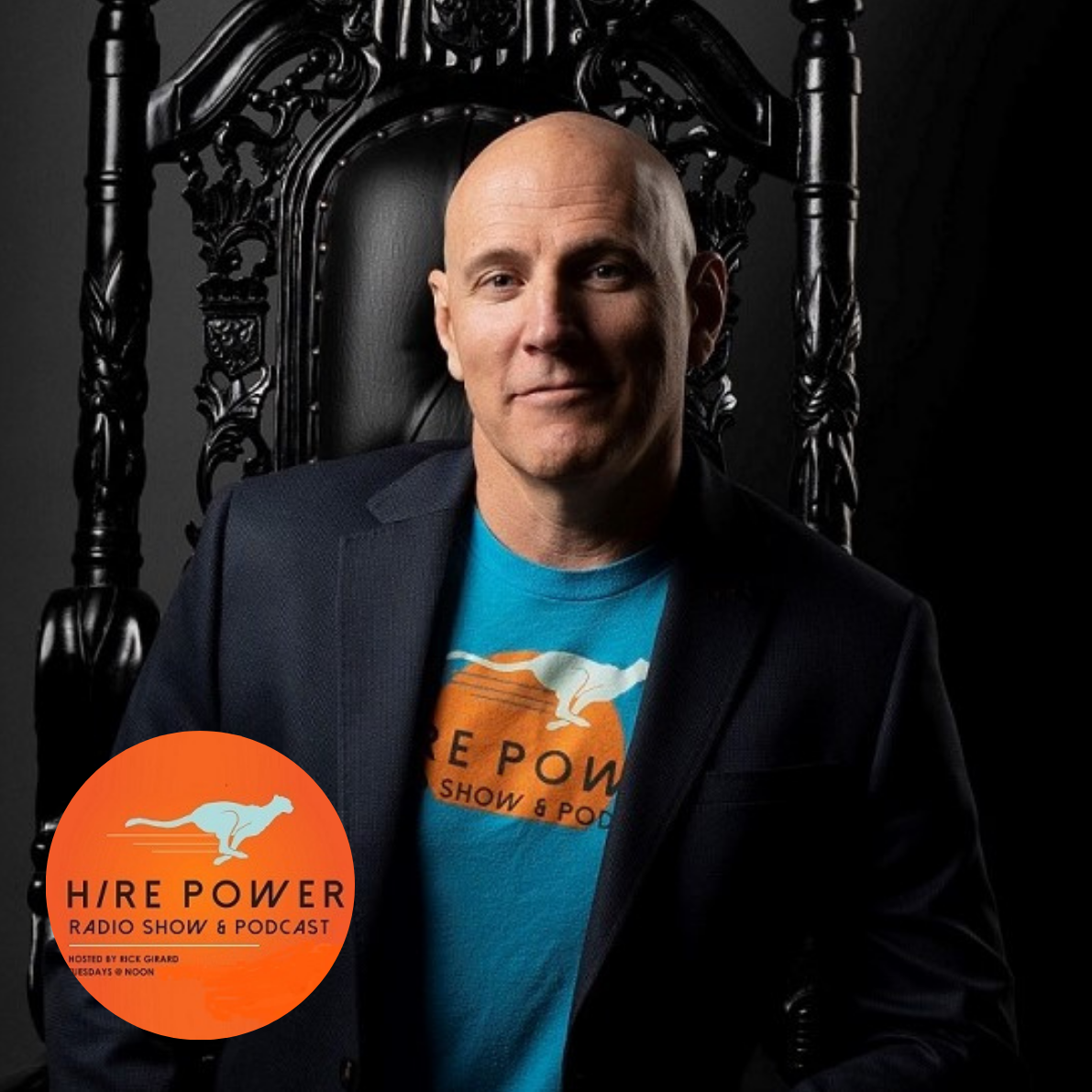
Welcome to the Hire Power Radio Show, where entrepreneurs and business leaders learn to hire with confidence and precision. Hosted by Rick Girard, this show is your go-to resource for avoiding costly hiring mistakes and securing the right talent to drive your company’s success. We dive deep into hiring challenges each week, featuring candid conversations with top-performing rebel entrepreneurs, disruptors, and industry experts. Join us every Tuesday at noon (PT) on LinkedIn Live for actionable insights, proven strategies, and the latest trends to give you the hiring edge. Subscribe now and join the movement to transform your hiring game. Do you have thoughts or questions? We’d love to hear from you!
Episodes
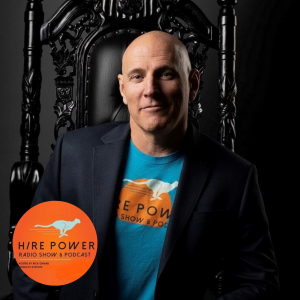
Thursday Jun 05, 2025
Leveraging AI to Create Highly Effective Job Descriptions with Rick Girard
Thursday Jun 05, 2025
Thursday Jun 05, 2025
In this episode of the Higher Power Radio Show, host Rick Girard discusses the common pitfalls of modern job descriptions and provides actionable solutions to improve them. Drawing comparisons to a successful 1913 Antarctic expedition ad, Rick emphasizes the importance of clarity, candidate focus, and performance metrics in job descriptions. He shares five key steps to crafting effective job descriptions and how leveraging AI can enhance this process. Tune in to learn how to attract the strongest talent for your business and maximize your people ROI.
00:00 Introduction: The Power of a Compelling Job Description
00:38 The Problem with Modern Job Descriptions
01:07 Welcome to Higher Power Radio Show
02:09 Common Complaints About Job Descriptions
05:59 Why Job Descriptions Fail
06:59 How to Fix Job Descriptions
16:02 Key Takeaways for Effective Job Descriptions
18:00 Conclusion and Farewell
Host Links:
LinkedIn: Rick Girard
Company: Intertru, Inc.
Podcast: Hire Power Radio Show & Podcast
Book: Healing Career Wounds (Amazon)
Powered by Intertru

Thursday May 15, 2025
Thursday May 15, 2025
In this episode of Higher Power Radio, host Rick Gerard delves into the current challenging hiring environment where AI-coached candidates are becoming increasingly common. He discusses how AI can deceive hiring managers by coaching candidates through interviews, resulting in more false positives and wasted interviews. Rick shares actionable strategies to identify and eliminate AI-coached candidates early in the screening process by focusing on behavioral and story-based questions. Learn how to differentiate genuine talent from AI-generated responses and ensure you're always hiring he best people.
00:00 Introduction to Higher Power Radio
00:14 The Current Hiring Landscape
00:35 AI-Coached Candidates: A Growing Concern
01:45 Spotting Red Flags in Resumes and Interviews
04:43 Solutions to Identify AI-Coached Candidates
05:41 Behavioral and Story-Based Questions
08:41 Understanding Candidate Desires
12:57 Red Flags and Ending Interviews Early
14:19 Conclusion and Final Thoughts
Links:
LinkedIn: Rick Girard
Company: Intertru, Inc.
Podcast: Hire Power Radio Show & Podcast
Book: Healing Career Wounds (Amazon)
Powered by Intertru

Thursday May 08, 2025
Overcoming Hiring Challenges: Insights from Top Entrepreneur Andy Duong
Thursday May 08, 2025
Thursday May 08, 2025
In this episode of the Higher Power Radio Show, host Rick Gerard sits down with seasoned entrepreneur Andy Duong to discuss the pitfalls and best practices of hiring. Andy shares his journey of building multiple successful companies, focusing on operational excellence and people-first leadership. They dive into the challenges of hiring familiar faces, the importance of defining roles and expectations, and the necessity of creating robust hiring processes. Learn about Andy's worst hire, how he adapted his approach, and discover actionable tips for hiring effectively. Don't miss this insightful discussion packed with valuable lessons for entrepreneurs and executives aiming to strengthen their teams.
00:00 Introduction to Higher Power Radio Show
00:14 The Pitfalls of Hiring Friends and Family
01:05 Guest Introduction: Andy Dew
01:54 Andy Dew's Early Hiring Mistakes
04:18 The Bad Hire Story
09:06 Developing a Robust Hiring Process
16:01 The Importance of Culture Fit
26:26 Key Takeaways and Conclusion
Wolf-Packing - https://wolf-packing.com/
Host Links:
- LinkedIn: Rick Girard
- Company: Intertru, Inc.
- Podcast: Hire Power Radio Show & Podcast
- Book: Healing Career Wounds (Amazon)
Powered by Intertru

Thursday Apr 24, 2025
Leveraging AI Tools to Optimize Hiring: Insights from Vantisoft CEO Forest Zhang
Thursday Apr 24, 2025
Thursday Apr 24, 2025
Learn the most empowering hiring techniques to land the most desirable talent and drive your company's success. In this episode of the Higher Power Radio Show, host Rick Gerard discusses the challenges posed by AI tools in the hiring process, including the surge of fake candidates and resume manipulation. Special guest Forest Zhang, founder and CEO of Vanti, shares his approach to effectively using AI for filtering job applicants and crafting a streamlined hiring process. Discover how mapping out non-negotiables and using AI can help you filter candidates efficiently and find the right talent for your company. Tune in for valuable insights, practical advice, and more.
00:00 Introduction to Empowering Hiring Techniques
00:14 Challenges in Modern Hiring Processes
01:05 Welcome and Guest Introduction
02:04 AI and the Surge of Fake Candidates
03:03 The Impact of AI on Job Applications
08:14 Filtering Mechanisms and Non-Negotiables
12:22 Creating Effective Job Descriptions
15:12 Leveraging AI for Efficient Hiring
20:18 Key Takeaways and Conclusion
Guest Links:
LinkedIn: Forrest Zhang
Company: VantaSoft
Host Links:
LinkedIn: Rick Girard
Company: Intertru, Inc.
Podcast: Hire Power Radio Show & Podcast
Book: Healing Career Wounds (Amazon)
Powered by Intertru

Thursday Apr 17, 2025
Proactive vs Reactive Hiring with Kurt Wilkin
Thursday Apr 17, 2025
Thursday Apr 17, 2025
In this episode of the Higher Power Radio Show, host Rick Gerard and guest Kurt Wilkin, Chairman of Hire Better and Managing Partner of B Cave Capital, discuss the pitfalls of reactive hiring and the importance of having a strong, proactive hiring strategy. They delve into techniques for assessing team needs, creating a talent roadmap, and the importance of having the right people in the right roles. Key insights include the necessity of planning hires well in advance, building a virtual bench of potential candidates, and the significance of asking the right questions to evaluate your current team. They also explore the challenges entrepreneurs face when growing their companies and how to navigate hiring executives and other key roles effectively. Tune in to learn how to build a game-changing team for your high-growth company.
00:00 Introduction to Higher Power Radio Show
00:13 The Entrepreneur's Hiring Dilemma
01:28 Meet Our Guest: Kurt Wilkin
02:59 Proactive vs Reactive Hiring
04:37 Understanding Your Team's Needs
07:52 Who's Your Mike?
10:46 Building a Talent Roadmap
20:49 Executing the Hiring Strategy
22:59 Key Takeaways and Conclusion
Guest Links:
LinkedIn: Kurt Wilkin
Web: Who's Your Mike
Host Links:
LinkedIn: Rick Girard
Company: Intertru, Inc.
Podcast: Hire Power Radio Show & Podcast
Book: Healing Career Wounds (Amazon)
Powered by Intertru

Thursday Apr 10, 2025
How AI is Hacking Your Recruiting Process with Rick Girard
Thursday Apr 10, 2025
Thursday Apr 10, 2025
We’re living in a wild hiring market—and AI is making it even wilder! In this solo episode, host Rick Gerard—founder of HireOS and author of Healing Career Wounds—dives deep into how generative AI and resume hacking disrupt recruiting like never before.
Rick breaks down real-world stories from the front lines of recruiting. ChatGPT-style resume reengineering is fooling traditional ATS software, allowing bad actors through and leaving high-quality candidates behind. But it’s not all doom and gloom—Rick also shares actionable strategies companies (and candidates!) can use to adapt and thrive.
🔥 What You'll Learn in This Episode:
How AI tools are being used to “game” the resume screening process
Why traditional applicant tracking systems are becoming obsolete
Real-life case studies of fake candidates making it to interviews
The hidden dangers of prompt-engineered resumes
Why focusing on quality over quantity is key for job seekers
What hiring leaders must do NOW to avoid hiring disasters
Pro tips on spotting resume red flags and aligning with core values
🧠 Key Takeaways:
AI ≠ Magic Bullet: Generative AI can create polished resumes, but it also enables fraud and increases false positives.
Behavior & Values Matter: Companies must go beyond skills and align candidates with core values and culture.
Smart Screening Tactics: From verifying LinkedIn connections to structured interviews, Rick offers tools to improve your hiring process.
🔧 Solutions Discussed:
Narrowing candidate focus for better fits
Leveraging behavioral interview techniques
Spotting patterns in falsified resumes
Creating AI-resilient recruiting strategies
Tips for ethical and effective AI usage in hiring
👤 About the Host:
Rick Gerard is a recovering headhunter turned AI startup founder, creator of HireOS, and a Brazilian Jiu-Jitsu black belt who’s not afraid to call out outdated hiring methods. His mission? Help companies hire with precision and purpose—every time.
🔗 Links & Resources:
- LinkedIn: Rick Girard
- Company: Intertru, Inc.
- Podcast: Hire Power Radio Show & Podcast
- Book: Healing Career Wounds (Amazon)
Powered by Intertru
🎯 Perfect For:
Entrepreneurs & hiring managers
Recruiters & HR professionals
Job seekers navigating AI-enhanced hiring
Anyone curious about the future of work
👍 Enjoyed this episode?
Don’t forget to LIKE, COMMENT, and SUBSCRIBE for more insights on winning the war for top talent!
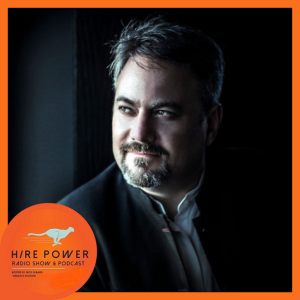
Tuesday Feb 25, 2025
The Red Wedding Business Decision with Adam Philipp
Tuesday Feb 25, 2025
Tuesday Feb 25, 2025
Listening to what your customers desire and having the courage to uproot your business model to accommodate them, takes guts. It’s essentially disrupting your own short-term profits for a long-term bigger picture.
Your employees who are “comfortable” will most likely leave as most people do not like change. Especially, radical change! Leaving the opportunity for others to step up and help to drive the business forward.
Today, we are going to delve into a story of what happens when you dare to disrupt your own business.
Guest Bio
Adam Philipp is the Founder & Patent Attorney of Aeon Law. Adam is a strategic attorney who focuses on innovative solutions for creators, entrepreneurs, and C-suite executives.
He believes that all of his clients deserve to understand how their IP tools will work for them, and their business model is designed to provide a transparent process with predictable budgets.
Problem:
- Story of the Red Wedding (in 2010) due to switch to prebilling with fixed prices
- Misaligned billing structure - eliminating billable hours
- Required changing the compensation structure as well
- Stop tracing the billable hour
- AR- pain point of collecting from clients
- Stopping the cycle of billable hours (not charging for revisions)
- Able to hire experienced people who want to do high-quality work
- Efficiency in getting paid twice as much for giving quality delivery
- “If you want to succeed, stop doing what you hate” - billable hours
- “If you give a hard job to a lazy person, he’ll find an easier way to do it”
Why is this important to the company?
- Allow him to attract people who already have professional relationships
- Less training on the company’s end
Rick’s Nuggets
- My Restructure story
How do we solve the problem?
- Implementing a new client payment and attorney compensation structure
- Provide a fee schedule like a restaurant menu
- People: approach attorneys who tried solo practitionership
- They didn’t want to go back to unreasonable hourly requirements.
- People wanted comradery, practice without getting their souls crushed
- Pay a higher compensation with less overhead
- Push to 40% over 30%
- Invest in efficiency tools (automation of repeatable tasks)
- Hackers who set up tools.
- Compensate at a fair level and provide tools to gain mastery
- Choose your own adventure model.
- Within 1 year with ½ the team, they doubled their income!
- Long term Joy!
Key Takeaways that the Audience can plug into their business today!
- Clients love fixed prices - giving back the power to make business decisions again
- Point in time when Clients are most willing to pay is before the project begins (avoid pricing disputes)
- Money is in the trust waiting to be allocated upon the works completion - (eliminate collections)
Guest Links
- LinkedIn: Adam Philipp
- Company: AEON Law
Host Links:
- LinkedIn: Rick Girard
- Company: Intertru, Inc.
- Podcast: Hire Power Radio Show & Podcast
- Book: Healing Career Wounds (Amazon)
Powered by Intertru
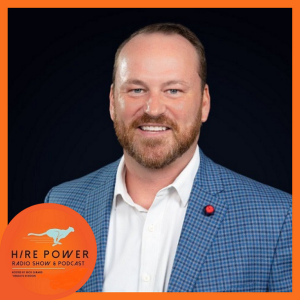
Monday Feb 24, 2025
How to Make a Culture Stand Out with Scott Hollrah
Monday Feb 24, 2025
Monday Feb 24, 2025
As a founder, your first hire is always the hardest. Most often we take the first person who will say yes. Not putting a lot of diligence into a conversation about setting proper expectations.
What ends up happening is that we either get really lucky (if it works out) or it becomes a cautionary tale of what not to do when starting a business. Often an expensive lesson to learn.
Starting with a strong culture in mind from day 1 is the key to having the difficult conversations that ensure a first hire's success.
Guest Bio
Scott Hollrah is the Founder & CEO of Venn Technology. Scott has built a reputation as a technologist, problem solver, and creator of great culture.
In his role at Venn Technology, he is focused on helping mid-market organizations be more effective through the use of automation. The company has won numerous awards that include Dallas Business Journal’s Best Places to Work, and Inc 5000.
In addition to family and work, Scott hosts In the Thick of It, a podcast that highlights the trials and triumphs of fellow founders. He is an expert in building a culture that stands out from his competitors.
Problem:
- Started as a 1 man shop
- Now at 30+ people
- The first hire was the hardest thing he had to do
- Get over the fact that he eats last
- Is this person that I hire going to care about the customer as much as I do
- Introduced by a mutual connection
- First 12-18 months he had to learn to delegate
- People will do things different
- Core value of Delighted Partners - reminder throughout the office - customer & partner logos - these are the folks who make us successful, we have a responsibility to make them successful
- When we fail do everything to make things right
- We are flawed, not perfect. But we own our mistakes
- Accept you are not perfect and expect that you make things right as well
- Culture has been the same from the outset
- Treat people how you’d like to be treated
- Wants to sleep well at night and not regretting his day
- Phrase - When you take PTO, take PTO!
Rick’s Nuggets
- Having the difficult conversations
How do we solve the problem?
- Doubled down on buying a building
- An In-person culture
- I had an offer turned down
- Get stuck on a problem, tap someone on the shoulder, grab a whiteboard
- Build through proximity
- One Team
- Chad Nelson Golden Toilet Brush Award
- Display ownership
- Sought to be very unconventional
- Bring a different energy!
- Build the kind of company he wants to work for
- Very casual
- Mascot - Bijorn the Yeti
- Not afraid to let the freak flag fly
- Texas Independence Day is a company holiday
- Are we doing what we aspire to Join:
- I want to work here because…
- Watched your YouTube videos
- Watched podcast
- Read content
- “Do they want the job or a job?”
- Research people did on the company and him
- When guests or prospective team members visit the office we literally roll out a red carpet and have a sign welcoming them
- Most people take a picture of it
- Makes a great first impression
Rick’s Nuggets
- Values need to be polarizing
Key Takeaways that the Audience can plug into their business today!
- Know your values - talk about them frequently
- We have a standing weekly meeting and highlight one value each time
- One of our core values is “One Team” - each quarter we award someone the “Chad Nelson One Team Award” - also known as “The Golden Toilet Brush” - this is a high honor
- Find ways to create community and fellowship among your people
- Quarterly hackathon
- Family party every summer
Guest Links
- LinkedIn: Scott Hollrah
- Company: Venn Technology
- Facebook: Venn Technology
- Instagram: Venn Technology
- YouTube: Venn Technology
- Podcast: In the Thick of It | The Junction
Host Links:
- LinkedIn: Rick Girard
- Company: Intertru, Inc.
- Podcast: Hire Power Radio Show & Podcast
- Book: Healing Career Wounds (Amazon)
Powered by Intertru

Friday Feb 21, 2025
WIFM is the Key to People Retention & Growth with Steve Hamil
Friday Feb 21, 2025
Friday Feb 21, 2025
Today let’s start with the question, “Does our company make your life better?”
Ideally, the answer is yes. But in my experience as a top Silicon Valley headhunter, the answer is almost always NO.
This is one of my favorite questions to ask when I recruit people because it opens the door to providing a stronger opportunity with another company… Usually my clients.
If all companies just asked their employees how they could provide more than just a paycheck and a ping pong table, they would experience greater retention and more profitable growth.
Guest Bio
Steve Hamil is the Director of Operations of Populist Cleaning Co. The Populist mission statement and core values, which emphasize personal and professional growth, really resonate with him. He thrives in a place where he can make a difference. Not only that but where I’ll be challenged, as well.
Steve is an outstanding communicator with a passion for coaching, mentoring, training, conflict resolution, and guidance.
Problem:
- A high turnover of 100-200% is normal..
- Been able to get it down to 45% on a rolling rate average: 1st quarter 24 29%, 2nd quarter 47.5%
- High turnover is costly
- Operational & Quality
- Time, training, QOS
- knowledge transfer
Why is this important to the company?
- Populist life not better:
- cost$ 6 months operation Populist lost $1026.89 in support staff coverage., Additionally, support travel time to site $4528.
- + hiring costs,
- Employees life not better:
- 5 individuals were hired and did not work out 1 to 2 week; lots of train and re-training.
- Stress on support staff/management
- Customer life not better
- Multiple people in and out of the account: extra work on badging/security
- Quality – compromised with transfer loss between candidates.
- Support staff not always full coverage
Rick’s Nuggets
- The mail room from Elf
- We need to stop looking at miss-hires as the cost of doing business
- Opportunity cost loss -
- People from production
- Customer costs - their people
How do we solve the problem?
- Customer success:
- When you find the right employees and customer fit
- When you find the right employees and customer fit
- Populist life better
- 6 month managing $4378 above profit line
- Little turnover, especially in key roles.
- Employees life made better
- Found the right person, right seat
- Happy with job, pay
- Customer’s life made better through:
- Good communication
- Captured work through consistency of personnel
- Using a Pre-interview phone screen, key questions that we ask to ascertain core value/cultural fit:
- What environment do you thrive in?
- Unfortunately, this industry can be a bit thankless. However, Populist has five Core Values we really try to stand behind in all we do. I’m going to state them, and you can let me know if one or more resonates with you. Our core values are Commitment, Hard work, Individual Responsibility, Respect, and Professionalism.
- Placing steps of commitment in the interview process. Core value match first
- Pre-interview phone screen –
- Background check
- Second interview, in person
- Orientation, in person (frist day)
- Culture engagement officer - phone screen
- Interview sheet- questions to relate to core values
- Core value grid. And seeking to match right person, right seat.
- First 90-day Engagement
- Cultural Experience officer contacting the employee multiple times before 90 days (right person,right seat focus) and
- Operations properly onboarding/training/checking-in during first 90 days (right person, right seat focus).
- Touch and engagement followups, assessing first 90
- Quarterly teams call, whole company- 1 hour long
- Share EOS moments, training moments, HR moments, shout-outs
Rick’s Nuggets
- Only 23% of the workforce is engaged at work
- Ask the question: Are we giving you what you need?
Key Takeaways that the Audience can plug into their business today!
- Using a Pre-interview phone screen, key questions that we ask to ascertain core value/cultural fit:
- Placing steps of commitment in the interview process.
- Second interview using questions that have gone through a Core value grid. And seeking to match right person, right seat.
- Engaging the employee from two perspectives: Cultural Experience and Operations
Guest Links
- LinkedIn: Steve Hamil
- Company: Populist Cleaning Co.
- Facebook: Populist Cleaning Co.
Host Links:
- LinkedIn: Rick Girard
- Company: Intertru, Inc.
- Podcast: Hire Power Radio Show & Podcast
- Book: Healing Career Wounds (Amazon)
Powered by Intertru

Thursday Feb 20, 2025
Why Phone Screens Matter in Playbook Adoption with Todd Gorell
Thursday Feb 20, 2025
Thursday Feb 20, 2025
Hiring great salespeople is not as tough as you might think… And the key to this is a great phone screen (aka: Discovery call).
Here is why the discovery call is so important. First, People are the most truthful in their first conversation because they have invested very little time or emotional bandwidth.
Second, interviewees are not expecting a level of diligence early on so they are not as guarded with the information given.
This allows us to gather accurate data to truly understand if a person is positioned right for our unique company based on the candidate’s desire and level of performance.
Guest Bio
Todd Gorell is the Chief Growth Officer of The Pavement Group. Where Todd is responsible for driving revenue and team growth for the most advanced, dynamic, and market-diverse facilities maintenance company in history.
With over 15 years of sales executive experience, Todd has built and led teams, developed new business segments, and fostered customer relationships across various
industries. Scaling the business 10x in the past 4 years!
Problem:
- Story: Hired a very senior person who did not want to be part of the team.
- Tended to go rogue. Loan Wolf salesperson
- He was a Polished interviewer, with a good resume.
- Did not need help, and didn't want anyone to tell him how to do the job.
- His show
- At a customer meeting, got drunk at a work meeting
- Did not close the deal
- Fired the next day
- Hiring people who are not coachable
- Seasoned people are not adaptable to your playbook
- Fit Culture
Rick’s Nuggets
- Quickly understanding where the person will thrive
- Vision for the ideal company, type of work, size & Role
- Evidence of past performance (key indicator of future performance)
How do we solve the problem?
- Do not have a difficult time hiring people at all
- Create a lot of attention through content a lot of people reaching out
- Divide and Conquer
- Two people interview - compare notes after both interviews are completed.
- *** Phone screen- live sales situation
- Follow a script (conversational)
- *Comfortable talking about money
- What do you need to make? Get right to it
- *Asking smart questions back
- Are they positioning themselves to sell us… good at asking questions
- *Are they excuse-makers
- Why are things working/not working
- Questions
- What was the last book you read
- What do you do for fun
- Why Questions
- Culture- Core values
- Hire, fire, review based on core values
- 10x the company since 2020
Rick’s Nuggets
- “If you could create your next opportunity from scratch, what would it look like for you?”
- What would the company look like?
- What work would you be doing?
- Why is this important to you?
Key Takeaways that the Audience can plug into their business today!
- Get as much out of the phone screen as you can
- Disqualify quickly- don't waste anyone’s time
- Team up on hiring- don't share notes until 1st interview is complete
Guest Links
- LinkedIn: Todd Gorell
- Company: The Pavement Group
- Facebook: The Pavement Group
- Instagram: The Pavement Group
- YouTube: The Pavement Group
Host Links:
- LinkedIn: Rick Girard
- Company: Intertru, Inc.
- Podcast: Hire Power Radio Show & Podcast
- Book: Healing Career Wounds (Amazon)
Powered by Intertru

Wednesday Feb 19, 2025
When the Mission Drives Growh and Culture with Darcie Durham
Wednesday Feb 19, 2025
Wednesday Feb 19, 2025
Tom’s shoes started with the mission of donating a pair of shoes for every pair bought. A powerful mission that attracts a lot of people. However, resonating with the mission is not enough.
To be successful in any organization, one must also naturally operate in a manner that is in alignment with the company’s core values.
What makes this critical to successful hiring is that it gives people the opportunity to thrive from day one. By eliminating most of the friction that is often encountered when the person steps into the new role.
Today, we are going to discuss how one company has been able to stay on mission and elevate their culture. All while experiencing 3x growth.
Guest Bio:
Darcie Durham is the COO/CFO of HTX Labs. Inc. HTX Labs is a fully remote, immersive learning software company that provides immersive XR classrooms on their EMPACT platform for the Department of Defense and others.
In the last 2 years, HTX Labs has experienced rapid growth, tripled in headcount and is experiencing record-breaking performance month over month.
Problem:
- Protecting Culture is critical to their momentum
- How not to lose culture when you have tripled in size
- Values are the core to success with their customers
- She joined as employee 26 now at 85 people
- Strong culture and very intentional
- Fully remote company
- Challenge
- Being able to articulate culture in a way that people can identify a fit.
- Fully remote, meet with a lot of folks, peer interview
- Darcie is the final interviewer- how do they tie with the mission
Why is this important to the company?
- The foundation of the culture
- Two founders are still principals involved in day-to-day
- Humble and open to listening to feedback
- Embodies open to feedback - we can’t be experts on all things in an emerging field - no one has done this before - have to be okay with making mistakes, owning them, and moving on
Rick’s Nuggets
- The Perfect Storm: Growth, Hiring & Culture
- Need clouds judgment - the gut needs more evidence
- Catch and release
How did we solve the problem?
- Talking about mission and values
- They don't bring them up in the interview
- Mission
- Ask why they want to come to work with us?
- Do they know what we do? Understand what our product/customer is?
- “What do you need in a work environment to feel engaged and excited about coming to work?” - understand the motivation
- How do you feel about a remote work environment?
- “Something you are proud of or good at that would not come through on a resume?”
- “What would people you worked with in the past say are key things to be successful in working with you?” - red flags
- Does this person align with our behaviors that would make them successful
- On Fire - Driven, hungry, enthusiastic and passionate.
- In Touch - Proactive, discerning, intentional, realistic and reflective.
- No Fear - Nimble, adaptable, courageous, and willing.
- All In - Humble, candid, empathetic, appreciative, giving and welcoming.
- Adaptable- We do not have a process for x. Would you like to take a stab at writing it? - screen for comfort in the “gray area” - reinforce throughout interviews and final interview.
Rick’s Nuggets
- Tell me about a time when you fixed an issue that was… not assigned to you (driven)
- Describe a time when you had to pivot to complete a project (adaptable)
- What prompted the pivot?
- How did the change affect the outcome
- Why was this important to you?
Key Takeaways that the Audience can plug into their business today!
- Don't compromise on culture. If you do, correct it quickly!
- When you hire people you don't want to work with…. Productivity tanks!
- If it’s not a slam dunk it should be a “no” - when we try to make it work, we’re compromising on something
Guest Links
- LinkedIn: Darcie Durham
- Company: HTX Labs
- Facebook: HTX Labs
- YouTube: HTX Labs
Host Links:
- LinkedIn: Rick Girard
- Company: Intertru, Inc.
- Podcast: Hire Power Radio Show & Podcast
- Book: Healing Career Wounds (Amazon)
Powered by Intertru
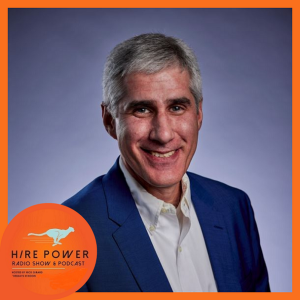
Tuesday Feb 18, 2025
How to Squash Employee Turnover with Phillip Thune
Tuesday Feb 18, 2025
Tuesday Feb 18, 2025
We have all heard the phrase that people do not leave jobs, they leave managers…
This truth is supported by data from Gallop, 75% of over 1 million workers surveyed, left because of their bosses and not the work or the company.
So how do we combat this?
First, let’s train our managers. Second, let’s do a better job of hiring people who will align with the values of the company and the manager. Setting both parties up for success and ensuring the company’s forward momentum.
Guest Bio:
Phillip Thune, CEO of Adthena. Phillip has been involved in the tech startup and online search sectors for 20+ years and is a proven leader in the ad-tech and digital media space. Adthena is an award-winning search intelligence platform to help brands, marketers, and agencies dominate their competitive landscapes.
Philip is a values-driven leader who had helped scale four different companies from early stages, including FindWhat.com, which went from $500k of revenue and 35 employees when Phillip joined to $200 million, 500 employees, and a market cap of $700 million.
Problem:
- Turnover - For at least 4 years, the company had not gone more than a few months without the departure of someone from the exec team
- Soon after Phillip joined, the Chief Revenue Officer of Adthena left, but since then, not a single exec turnover, so it’s now been about 14 months and counting…
- Before: Difficult to get any momentum with a high turnover
- Phillip replaced the founder, who had been CEO for 11 years
- The departed sales leader had only been there 3 months. His replacement, the company’s long-time UK sales leader, was the 5th leader of the sales team over a 6 month period!!
- CFO, CMO, CTO all rock solid. Lot of turnover with head of people, CRO, and CPO
- Phillip started in March 2023. In Q3 and Q4 2023 very little turnover. Problem solved!?! Nope - a lot of turnover at the manager/team level in Q1 2024
- Shifted
How do we solve the problem?
- Put in the don’t-quit rule & sherpa plans
- “Don’t quit without notice – whether it’s money, responsibility, ability to grow/learn, a new challenge, etc. – first try to see if we can fulfill that need at Adthena via your Sherpa Plan. If not, we will do everything possible to help you find a new job outside of Adthena that gets you what you want.”
- Reasons: tell us you are unhappy, and figure out if we can solve the problem
- Commitment: if we can't help solve the problem, we will give full support in terms of transitioning out
- Sherpa plan: formal understanding of what is available for you at Adthena. Career progression plan
- Thought it worked, but discovered it didn't.
- Introduced the rule, but didn’t communicate well enough.
- In Q1, a few key people quit
- Reintroduced the role formally
- Communicated the value of staying
- Interesting new opportunity
Rick’s Nuggets
- Creating a safe environment for open communication
- Leaders take leaving personal
- If a person is not working out, take the time to replace them with a person who will thrive in your environment
Key Takeaways that the Audience can plug into their business today!
- If you want to be known among your current and former employees for something - in our case, it’s that we’re weirdly obsessed with our team member’s career growth - you need to
- 1) bring it up regularly and have it reinforced on a regular basis - in our case with Sherpa plans that must happen at least twice per year
- 2) it needs to benefit the employee as much as the company.
Guest Links
- LinkedIn: Phillip Thune
- Company: Adthena
Host Links:
- LinkedIn: Rick Girard
- Company: Intertru, Inc.
- Podcast: Hire Power Radio Show & Podcast
- Book: Healing Career Wounds (Amazon)
Powered by Intertru
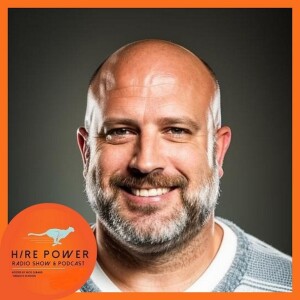
Monday Feb 17, 2025
Why You Should Stop Hiring Big Company Industry Experts with Forrest Derr
Monday Feb 17, 2025
Monday Feb 17, 2025
The classic blunder I have seen hundreds of times during my career is the “vanity hire”. Pulling out all the stops to get someone from a name-brand company who, in your mind, is the answer to all your prayers.
The reality is that that person turns out to be the cause of future nightmares. Not fitting in with the culture, pace, or the expectations of the team. This happens because your little entrepreneurial venture is not truly what that person desires.
Guest Bio:
Forrest Derr is the COO & Integrator at Sexton Lawn & Landscape. Forrest began his journey in the working world as a small business owner, managing a paper route in his neighborhood. He obtained a business management degree from University of Mobile and worked for an office furniture company for 18 years which provided experience in sales, operations, technology, and customer satisfaction. He also honed his skills in inventory management, team scheduling, and technology integration. He ascended to the level of VP of Operations and while there built and sold a tech consulting business.
In 2015, Forrest joined Altaworx, broadening his expertise in data-center management, finance, and marketing as President. Now, as part of Sexton Lawn & Landscape, He is leading their team into the future, leveraging EOS as their guiding business framework.
Challenge today?
Hiring for Skills & Network for people from major organizations does not translate to small businesses
Story:
- Tried to talk him out of taking the job at a small company
- Could not adapt to a small company environment
- In large organizations it is easy to hide in the corner,
- Not doing the work. Got real estate license while on their payroll
- Kept him for 9 months.
Why is this important to the company?
- Did not identify if he was a fit for the culture
- Highly paid farmer not a new business dev person
- Would not engage with the other employees
- Big business culture person
- Did not understand the metrics that were required
- Thought they could save them from a corporate life
- Inside industry hires were expensive
Rick’s Nuggets
- The vanity hire will kill you every time
- Your company is not the destination
How do we solve the problem?
- Fired them
- Stopped looking for people from the industry
- Stayed away from people already in the industry
- Focused on people skills, not industry skills
- Non-industry-specific skills
- People who developed complementary skills
- Tell everyone interviewed to Join the company not take a job
- Team members have to be Flexible and willing to move around as need to fill gaps
- We leveraged the leadership team as part of the interview process
- Evaluated core values and culture fit over skills
- Disguise the core value in the question (around the value)
- Retention improved as a result. Before they were terminating people quickly.
- ***Not a fit and why
- Profit margins went up? Productivity dropped while wrong hires were working
Rick’s Nuggets
- Positioning is your main concern
- Do they deeply desire your opportunity
- Let them talk!
- Stop Selling and start listening
Key Takeaways that the Audience can plug into their business today!
- Have core values clearly defined
- Hire based on core values and don't focus on skills teach and mentor
- Leadership bought into all members that are hired
Guest Links
- LinkedIn: Forrest Derr
- Company: Sexton Lawn & Landscape
Host Links:
- LinkedIn: Rick Girard
- Company: Intertru, Inc.
- Podcast: Hire Power Radio Show & Podcast
- Book: Healing Career Wounds (Amazon)
Powered by Intertru
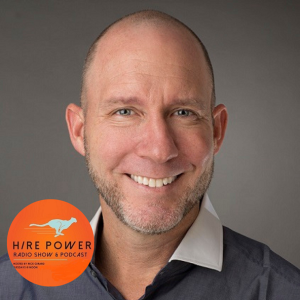
Thursday Nov 17, 2022
Thursday Nov 17, 2022
Let’s talk about performance metrics for a minute.
Do you have performance metrics drawn out for every person before they are hired? Are they clear on the expectations for the first 90 days of employment?
If not, you are setting people up for failure because expectations are never in alignment. We're going to leave it to you to “figure it out”. Then we scratch our heads when the person fails, wondering what we missed in the interview.
What was missed was the work on defining the role and writing down the company’s expectations of what needed to be accomplished by the individual in the first 90-120 days of employment.
I have discovered that companies who just “wing it” have a much higher offer turn-down rate and employee failure rate than companies that invest the time to clearly define what success looks like.
Look this is not “too hard” because you don't know what will happen in the next few months of the business. If it is too hard, maybe you are in the wrong business.
Guest Bio:
Kurt Davis is a technology entrepreneur and author.
The first 20 years of his career were spent between Silicon Valley and Asia, working with technology startups in finance and business development roles.
Kurt is now focused on Biteline (a startup marketplace for dental professionals) & Recently published a book called Navigate to the Lighthouse: A Silicon Valley Guide to Executing Global Deals.
TODAY WE DISCUSS:
- Performance metrics
- How to clearly define metrics
Challenge?
- The company is not successful because of people not knowing
- Gate of allocation of resources
- Deep analysis
- Gut & instinct drive the decisions
- Distrust the gut …. Until it is the last variable
- The team cannot hide now that we are under the microscope
- Setting expectations:
- The work is going to be hard
- Leadership needs to communicate
Why is this important to the company?
- Need to get it right the first time
- Want people to trust the strategy and thought process
- Need people to come on board the thinking & the strategy
- Getting people behind the way of thinking
Rick’s Nuggets:
- Not sure how to clearly define the metrics
- Out of the scope of their expertise
- Dont have the time
- Not sure
- We’ll let them tell us
- Hiring failures start with your preparation (or lack thereof)
How do we solve the problem?
- Look at the problem (analysis)
- Clearly define what you want each person to achieve
- Clear about what you are investing against
- Very clear on what you need each person to get done
- Do they fit the culture, values
- Measure twice, cut once
- Can the person get it done
- Resume checks off
- Fit value wise
- Deep details
- Look at the work, ask for deliverables
- Working exercise
Rick’s Nuggets:
- First Week, First 30, 60 & 90 days
- Have deliverables at each milestone
- Present to the team your findings on X
- Prepare a plan for Y
- Deliver first version of Z
- Put them in your Job description
- Here’s what you will be held accountable for in your first 30 days
Key Takeaways that the Audience can plug into their business today! (Value):
- Take the time to do your homework. Do your strategy, planning.
- Know exactly what that person is going to do in the first 90 days.
Guest Links:
- LinkedIn: https://www.linkedin.com/in/kurtdavis1/
- Twitter: https://twitter.com/KurtDavisNew
- Instagram: https://www.instagram.com/kdalive/
- Facebook: https://www.facebook.com/kdalivetravel/
- YouTube: https://www.youtube.com/user/kudavis
- Book: https://www.amazon.com/Navigate-Lighthouse-Silicon-Valley-Executing/dp/1544530331
Host Links:
- LinkedIn: https://www.linkedin.com/in/rick-girard-07722/
- Company: https://www.stridesearch.com/
- Podcast: https://www.hirepowerradio.com
- YouTube: https://www.youtube.com/channel/UCeEJm9RoCfu8y7AJpaxkxqQ
- Authored: "Healing Career Wounds" https://amzn.to/3tGbtre
- Startup: www.intertru.ai
- HireOS® inquiry: rick@stridesearch.com
Show Sponsor:
- www.stridesearch.com
- www.intertru.ai
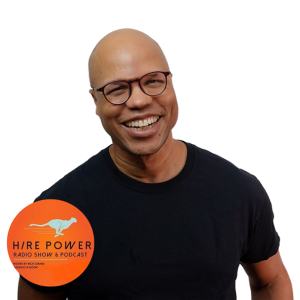
Thursday Jun 30, 2022
The Hiring 4-S: Strategy, Systems, Staff & Skills with Hilmon Sorey of CoachCRM
Thursday Jun 30, 2022
Thursday Jun 30, 2022
Are Strategy and Systems missing in your hiring process?
The answer is most likely “Yes” as 99.9% of entrepreneurs approach hiring as a reactive activity based on a current need. This is dangerous because it perpetuates the transactional mindset that sets you up for failure.
Strategy is not about “how do I turn on the funnel”. Strategy is about how you identify, contact & engage with the person who will thrive in your business. This means being able to articulate your value to align with each individual.
But, strategy is not enough to get an A-player to join your company. The structure of your interview process is the System that demonstrates excellence within the organization. And excellence is what every high performer strives for in their next company.
Guest Bio:
Hilmon Sorey is Co-Founder of CoachCRM sales coaching software for managers; Co-Founder of ClozeLoop, a sales strategy, training, and enablement firm with offices in New York, Houston, Silicon Valley, and Johannesburg; Partner in 2.12 Angels as a seed-stage venture capital firm; and author of 8 top-selling books on sales, sales management, and coaching.
He has helped build teams in companies that range from early-stage startups to Salesforce, Box, SurveyMonkey, Bill.com, and some of the fastest-growing companies in the world totaling over $600B in valuation and market cap.
He’s an award-winning trainer who has trained over 15,000 salespeople and over 5,000 executives. He is a sought-after speaker around the globe and a Forbes contributor.
Today We Discuss:
- The 4 S’s: Strategy, Systems, Staff & Skills
- How to implement the missing pieces into your organization
Challenge Today?
- Ensuring that you are hiring the right people who will have impact
- Understanding go-to-market strategy in how you hire
- Strategy and Systems absent in most hiring process
- How Companies Scale and How to Use Hiring as Competitive Advantage
Why is this important to the company?
- Ask any CEO of a Unicorn what they consider to be their competitive advantage. They’ll say their people.
- Tech eventually equals out, Markets change, Investors are wonderful - but even they invest in people.
Rick’s Nuggets
- Strategy absent:
- No time to do it
- Feel it’s not important
- It’s all bullshit anyways
- System
- No time to set up or train
- The results you get are the fruits of the effort of the work put.
How do we solve the problem?
- Strategy
- Understanding GTM strategy
- Competitive Differentiation (direct, indirect)
- Winning Zone
- Messaging and Channels
- Systems
- Agile Tech Stack
- Sales & Marketing Playbooks
- Feedback Loop and Ecosystem
- Staff
- Sales Strategy
- Competency Matrix
- Methodology for Alignment (proof)
- Culture
- Skills
- Training
- Coaching
- Margin Gains
Rick’s Nuggets
- Strategy:
- Only hire people who align with company values!
- Learn early
- Understand YOU first
- Only meet people who “lean in”
- System
- Interview process
- Documented, and communicated,
- Interview process
- Skills
- Train your people
Key Takeaways that the Audience can plug into their business today! (Value):
- Focus on Strategy and Systems to create scale.
- Hiring is as critical as identifying customers
Guest Links
- LinkedIn: https://www.linkedin.com/in/hilmonsorey/
- Company: https://www.coachcrm.com/
- LinkedIn: https://www.linkedin.com/company/coachcrm/
- Twitter: https://twitter.com/hilmonsorey
Host Links:
- LinkedIn: https://www.linkedin.com/in/rick-girard-07722/
- Company: https://www.stridesearch.com/
- Podcast: https://www.hirepowerradio.com
- YouTube: https://www.youtube.com/channel/UCeEJm9RoCfu8y7AJpaxkxqQ
- Authored: "Healing Career Wounds" https://amzn.to/3tGbtre
- HireOS inquiry: rick@stridesearch.com
Show Sponsor:
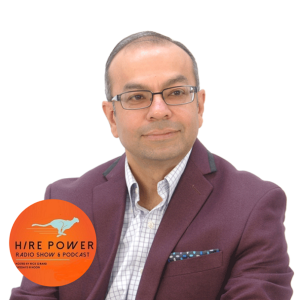
Thursday May 12, 2022
How Hiring the Wrong Person Eats Profits with Rocky Lalvani of Profit Comes First
Thursday May 12, 2022
Thursday May 12, 2022
We often hear data on how much bad hire costs you and your company. About 3x the person’s annual salary.
But how much did the interview process itself cost?
For a startup to make a hire, the company spends about 73 total hours interviewing. With the most significant cost being 30 hours of the production team's combined time. And this is assuming that 6 people make it through a full interview to get to the hire.
We have to ask ourselves, can we really afford to lose almost 4 days of productive activity to interview? Roughly $9,855 per role, not including candidate marketing or recruiting fees.
As a small business, the answer is NO!
Guest Bio:
Rocky Lalvani of Profit Comes First, serves as Chief Profitability Adviser for business owners. He teaches them how to ensure they get paid and make profit a priority! As a certified Profit First Professional he implements Mike Michalowicz's Profit First System.
Rocky started with nothing when his parents immigrated to the United States when he was two years old, and his parents were in their 40's. It was his parents' second time starting over in life as they moved here to experience the American dream.
In spite of a lot of struggles and his mom passing away when Rocky was 7, he has been able to achieve financial and life success. Rocky loves to share his journey and inspire others to achieve their dreams even faster.
Today we discuss:
- Why it is critical to understand what interviewing costs
- How to maximize your team's time with structure
Challenges today?
- Employees are the major cost for the business
- Employee should provide a return for the business
- Return of Cost of person (taxes, unemployment)
- Inefficiency does not show up anywhere on the p&l
- Wealth is built on the balance sheet!
Why is this important to the company?
- Costs to the company hiring
- Reduces morale
- Loose customer
- Nobody is tracking interview or training costs
- Hard costs that are very difficult to figure out
- As a client- doesn't want to do business with a company that hires wrong
- (leadership issue)
Rick’s Nuggets
- Team time waste!
- People who meet the team must be positioned properly
- Demonstrate strong leadership in protecting time
How do we solve the problem?
- Mission values purpose
- This is the step most business owners skip!
- Or in their head, but no one else knows
- Hire to it
- Have to live it
- Hire in alignment with mission, values, purpose
- Not who you like
- Having a interview process
- Understanding the real cost
- Bad Hire- Employee does not provide any value
- Mistakes
- Morale for everyone else
- Lose clients/ client trust
- Example Costco vs. Sam's
- Bad Hire- Employee does not provide any value
- Gross profit / Total payroll including taxes
- For every $1 in payroll returns x$ in gross profit
- Measure & Know
- Need to be making at least 2X payroll
- It all comes back to leadership!
We change the accounting formula of Sales - Expenses = Profit to Sales - Profit = Expenses. This ensures Profit comes first! (PS. It's not about money at all costs, people come before money!)
Rick’s Nuggets
- Values - most important
- Protect time costs
- Structure interview
- Each step is a decision
- Only progress value aligned, well positioned & accomplished people
- Decisions must have evidence to back
- Eliminate uncertainty
- Assign interview questions
- Prepare all for success
Key Takeaways that the Audience can plug into their business today! (Value):
- Is mission vision purpose written down & do your employees know it?
- Cost of a bad hire for you?
- How much profit do your employees bring you?
Guest Links
- LinkedIn: https://www.linkedin.com/in/rocky-lalvani/
- Company: https://profitcomesfirst.com/
- LinkedIn: https://www.linkedin.com/company/profit-comes-first/
- Twitter: https://twitter.com/rockylalvani
- Facebook: https://www.facebook.com/richersoul/
- Instagram: https://www.instagram.com/richer.soul/?hl=en
- Blog: http://richersoul.com/
- Podcast: https://podcasts.apple.com/us/podcast/profit-answer-man-implementing-the-profit-first-system/id1508245322
Host Links:
- LinkedIn: https://www.linkedin.com/in/rick-girard-07722/
- Company: https://www.stridesearch.com/
- Authored: "Healing Career Wounds" https://amzn.to/3tGbtre
- HireOS inquiry: rick@stridesearch.com
- Podcast: https://www.hirepowerradio.com
- YouTube: https://www.youtube.com/channel/UCeEJm9RoCfu8y7AJpaxkxqQ/featured
- Facebook: https://www.facebook.com/rick.girard.5
- Twitter: https://twitter.com/rick_girard?lang=en
- Instagram: https://www.instagram.com/rickgirard1/?hl=en
Show Sponsor:

Friday Nov 26, 2021
Friday Nov 26, 2021
Emotional Intelligence is defined as the capacity to be aware of, control, and express one's emotions, and to handle interpersonal relationships judiciously and empathetically.
Over the past year, EQ has become less important to companies because of the NEED for someone to fill the seat. This is just creating more problems, as less care is invested into uncovering the fit into the organization.
We need to understand that high performers are taking their time to find the right opportunity. So this is your wake up call to SLOW down!
Now, more than ever, it is critical to cultivate our own emotional intelligence & implement intelligent hiring practices into your organization.
Our guest today: Nada Nasserdeen, Founder of Rise Up For You
With over 10 years of experience as a college professor and former top executive for an education corporation, Nada understands the importance of fusing education, empowerment, and leadership together as she works with her clients and speaks to audiences worldwide.
Her company, Rise Up For You has been featured and worked with brands such as CBS, Google Next 19, and various Fortune 500 companies as well as small businesses.
Nada has been awarded 40 under 40 professionals in Orange County, California, and Women of Influence for Entrepreneurship in 2021.
She is a #1 Best Selling Author on Amazon, Leadership and Career Confidence Coach, and 2x TEDx Motivational Speaker.
Today we discuss:
- Emotional Intelligence and Why it needs to be front and center
- How to activate emotional intelligence into your hiring process
Challenge today?
- Building technology at such a fast rate
- Learning is not catching up
- Result: Huge gap in human skills
- Most values are human skills
- Not looking as values as a benchmark to hire
- Fostering the culture of human skills in the company so you can embrace
- Social skills are creating problems for the organization
- Active values
Why is this important to the company?
- Result
- Executives who implement Emotional intelligence in hiring
- Practicing EI- when things opened up 87% of her team, others were at 12%
- Sales increase of 325%
Rick’s Nuggets
- Feeding frenzy from the company end
- NOW is the time to SLOW down.
- Candidates are taking their time
- Easy to manage the timeline through communication
- Must progress through to conclusion
How do we solve the problem?
- Vales need to be activated around EQ
- Take each value 1 by 1 and figure out how to activate it in the culture.
- Steps to put values into action plan
- Create a value campaign
- Plan to execute the value
- Coach, train and provide development on these skills
- On going, not a 90 minute
- Enough training to be able to trainer, you no longer need a consulting company
- 6 month engagement
- Skills don't grow overnight
- Accurate company analysis
- Gauge on where the company is as far as strengths and weaknesses
- Can not make an impact unless you know the truth
- Survey to uncover where the work needs to be done
- Looking for evidence
Rick’s Nuggets
- Making the values a language
- Decisions made by the north star
- Emotional intelligence needs to be tied directly to your values
Key Takeaways that the Audience can plug into their business today! - Value:
- Do an assessment - understand who and where your company is
- Reevaluate the values and create a strategic map around implementation Ongoing training around soft skills to build the muscles within your team
Guest Links:
LinkedIn: https://www.linkedin.com/in/nadalena/
Company: https://www.riseupforyou.com/
LinkedIn: https://www.linkedin.com/company/riseupforyou/about/
Facebook: https://www.facebook.com/RiseUpForYou/
Twitter: :https://twitter.com/riseupforyou?lang=en
Instagram: https://www.instagram.com/riseupforyou/?hl=en
YouTube: https://www.youtube.com/c/RiseUpForYou/featured
FREEBIE: https://calendly.com/riseupforyou/freetraining
This show is proudly sponsored by Criteria Corp: https://www.criteriacorp.com/
Rick’s Book - Healing Career Wounds:
https://www.amazon.com/dp/B094TL14CD/ref=dp-kindle-redirect?_encoding=UTF8&btkr=1

Thursday Oct 28, 2021
Why Employees are REALLY Leaving Your Company with Leilani Quiray of bethechangeHR
Thursday Oct 28, 2021
Thursday Oct 28, 2021
We are in full swing of this “Great Resignation” and a record 4.3 million people quit their jobs in August.
If you are one of the business leaders who have been losing people, please realize that it is not them, It is YOU! People are quitting because they no longer align themselves with your company values … especially the mandated policies in and around the pandemic.
Right now, there are much better options in the form of growth and career satisfaction. Which is why people are taking their time in locating the opportunity that they really want.
So, if you want to stop the attrition and be able to hire strong people, get solid on your values and focus on what each individual is desiring in terms of their personal career growth.
Today we are discussing exactly what you need to do to become an employer of choice to start winning great people!
Our guest today: Leilani Quiray, Founder & CEO of Be The Change HR
A conscious company and social enterprise, providing HR support for small-to-medium sized businesses in any facet of HR from pre-hire to post-term and everything else that happens in between. Her and her team also teach free job readiness courses and provide free coaching to individuals who’ve been trafficked, homeless and veterans in transition. Her team is not only HR Pros, they are Life Changers.
Today we discuss:
- What people really want today from their careers in this great resignation
- The elements you need implemented in your company to successfully hire the strongest people
Challenge today?
- Why employees REALLY are choosing new employers?
- How to become the employer of choice today?
- People think they know what people want, but they don't know
- Money
- Benefits
- Perks
- Unrealistic vision (modeling google)
- What the owner wants (I like X so they’ll like X)
- What is it that people REALLY want?
- “Experts stress that people are leaving their jobs as workers across the country are demanding higher pay, better employment conditions and critical support in their daily lives.”
Why is this important to the company?
- Companies need humans
- ethics/moral duty to have a healthy workforce
- ROI
- More engagement = more profitable of a company
Rick’s Nuggets
- Flexibility: Personal freedom is a real issue!
- Attrition is happening due to continued company vaccine policies
- Both for and against
- “Don't want to be micromanaged”
- What does not matter … as much
- Compensation
- Benefits & Perks
How do we solve the problem?
- Ask your people
- Needs are different
- Use buckets core values & data on why people choose companies/stay at companies
- Survey your people unanimously
- Use data to make decisions
- Communicate back - low morale and distrust if you do not
- Job requirements reasonable? (also think DEI and diverse hires)
- Education and where (Harvard?) - biggest hurdle
- Opens the hiring pool to disadvantaged candidates
- Compensation Analysis
- Market Value
- Free tools BLS
- By demographics too
- Market Value
- Employer branding
- What do you look like publicly?
- Core values shine?
- How awesome you are should show!
- Evil Glassdoor (aka the Yelp for employers)
- Get ahead of the bad reviews by getting good ones
- Damage control and a look at ones own org if you already have bads ones
- Take a look at who you are hiring
- Core Value Work
- Do you have them?
- Assess them
- Tool?
- Book?
- Live them
- Weave them into everything
- We ask “are we living our core values?”
- Language within the company and how decisions are made
Rick’s Nuggets
- Are your values real?
- Job requirements need to be eliminated and replaced with performance metrics
- Form of conscious bias
- Performance Metrics = Accountability
- Interview for core value alignment
- Value alignment is the only true measure to ensure performance and tenure
- No reason to move when you provide everything a person desires
Key Takeaways that the Audience can plug into their business today! -Value:
- Do Pulse Check Surveys!
- Rethink your recruiting strategy: job requirements, your online presence, comp analysis
- LIVE your core values!
Guest Links
LinkedIn: https://www.linkedin.com/in/leilaniquiray/
Company: https://bethechangehr.org/
LinkedIn: https://www.linkedin.com/company/bethechangehr/
Facebook: https://www.facebook.com/bethechangehumanresources/
Twitter: https://twitter.com/bethechangehr
Instagram: https://www.instagram.com/bethechangehr/
YouTube: https://www.youtube.com/channel/UCqsQa5CXid2I0xQwiVyE2nw/featured
This show is proudly sponsored by Criteria Corp: https://www.criteriacorp.com/
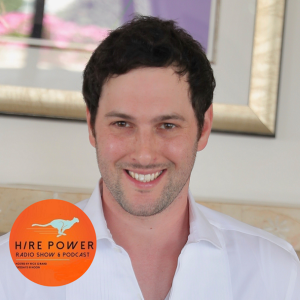
Thursday Oct 14, 2021
Hiring Your First 10 People with Jeremy Parker of Swag.com
Thursday Oct 14, 2021
Thursday Oct 14, 2021
Growing your company from 2 to 10 people is the most critical time in your company's life cycle. The reason for this is every single hire that is made can make or break the company.
Every founder I meet has a story of “we hired a person that we thought was going to be a rockstar and it turned out to be a disaster”.
So where do things go wrong when a bad hire is made?
The interview was run from a position of need; where we focus on selling the opportunity. So excited to get this new rockstar on board that we totally forget to take the time to understand if the person aligns with the values of the organization.
The good news is there is a solution to avoid these sometimes deadly mistakes and it just requires structure and developing your listening muscle.
Our guest today: Jeremy Parker, Co-Founder and CEO of Swag.com
Swag.com is the best place for companies to buy and distribute quality swag that people will actually want to keep. We work with 5,000+ companies including Facebook, Google, Amazon, Netflix, Spotify and Tik Tok.
Jeremy was named to Crain's NY 40 under 40 (Class of 2020) and Swag is #218 on the Inc 500 (2020) and #368 (2021)- Fastest growing private companies
Today we discuss:
- The importance of the first 10 hires
- Process to avoid making the wrong hire
Challenge today?
- Hiring for the resume
- People who have done it in the past
- Not about the skills but the culture
- One bad hire can destroy a business
Why is this important to the company?
Story: First 2 years just the founders. Then scaled quickly to 14 people
- Who you hire in the early days is super important. Need to be the right fit, for the right time. They could be a great person and extremely talented but if they are not the right fit for the time it can go sideways.
- Up to 70 people now and everyone is ability is important, skills not as important, as culture
How do we solve the problem?
- Stop micromanaging
- Guide & teach & trust that people will get it
- Allow people who are hiring to do the job
- Right mentality & Right focus (embracing failure)
- Failure is ok
- Embrace it!
- 4 rounds of interviews
- First meet with Department Head. If that goes well, meet with someone who is currently in that same position in the company, to make sure they feel this person can do the job well.
- If that goes well, meet with the COO,
- if that goes well, meet with CEO.
- If the candidate gets through all rounds and everyone feels they could be a good fit, we get at least two reference checks. Someone who they worked under and someone who they worked alongside.
Rick’s Nuggets
- Evaluate everyone around your values
Key Takeaways -Value:
- Being ok with failure! Nothing can go wrong when you are ok with it. Failure will get you where you need to go.
Guest Links:
LinkedIn: https://www.linkedin.com/in/jeremyianparker/
Company: https://swag.com/
LinkedIn: https://www.linkedin.com/company/swag.com/
Twitter:https://twitter.com/promotewithswag?ref_src=twsrc%5Egoogle%7Ctwcamp%5Eserp%7Ctwgr%5Eauthor
Facebook: https://www.facebook.com/promotewithswag/
Instagram: https://www.instagram.com/swagdotcom/?fbclid=IwAR1TnFCOQ8kv-chtsiP5wKexliw55YISu2rESPCLGUu86tEynikmspBy9xc
This show is proudly sponsored by Criteria Corp

Thursday Aug 26, 2021
Thursday Aug 26, 2021
You are at the point in your business where the company is ready to hire the first person to head up a department (i.e.: sales, marketing, engineering). You are excited and terrified at the same time. You’re thinking “I have to get this right”... and you are right, you do!
How do you evaluate a person with an area of expertise that you are NOT familiar with?
The answer, my friends, is being prepared, digging deep and really listening! Step outside of your first impression and be aware of your tendency of confirmation bias.
Shift your focus on gathering concrete evidence and the outcome will be the correct decision every time.
Our guest today: Liam Rose, Founder of Catalina Seven Ventures.
Liam is the founder of Catalina Seven Ventures, a Southern California consumer software startup. Before forming C7V, he managed the sales team for an Orange County-based entertainment startup. As a result of his own challenges trying to juggle health, academic obligations, and personal relationships while attending the University of Richmond, Liam created a new approach to life scheduling built to enable better balance. During his time at the Robins School of Business, he was selected as a 2019 Innovator Under 25.
Catalina Seven Ventures' first product, HORUS Life Schedule, is now available for Beta testing on iOS and Android (access available through the company website)."
Today we discuss:
- How to effectively make your first departmental hire
Challenge today?
Hiring the first person within a department
- How do you make that hire
- How do we know if the person is good
- What's the barometer
- First tech person, marketing, HR or finance person
How do you know if the person is the best person do the job at the current stage
- Culture & environment fit
- Metrics & deliverables
- How well they can make the connections between metrics and the outcome
Why is this important to the company?
- They will be the departmental cultural lead
- Top quality people hiring more top quality people
- The greatest impression people get is from the interview process itself
- Set the tone on how you are going to manage the person based on the interview process itself
- Improved interview process results in a higher level of talent
- Demonstrates the ability to understand the individual
- Ignorance of the process
Rick’s Nuggets
- Every hire is critical at every stage of your start up!
- Hire slow, fire slower-er-er
- Firing fast is negligence & kills culture (reduces trust, increases anxiety)
- Cult creation- Steve Newcomb (https://medium.com/cult-creation/cult-creation-a44303564f21)
- Firing fast “kills innovation, ownership and trust”
How do we solve the problem?
- Signaling - feel a unique attraction to our company
- Job Advertisement
- Distributed via word of mouth/referrals first
- The step beyond who we are. Bold- unapologetically ourselves
- Demonstration of understanding
-
- Interview process
- Realistic expectations
- Show that people can succeed
- Difficult but not impossible
- Show professional empathy
- What is going to make you most happy?
- What does the individual want?
- Communication preference, invest in every core operation of the company
- Calling the Hotline
- Advisor de-risk
- Outside influence to identify the obvious
Rick’s Nuggets
- Prepare yourself by adopting process, engage in interview training & experience
- Process: must have a flow and timing- Start on time, end on time
- Discovery call (45 minutes)
- Interview #1 Cultural (60 minutes)
- Deeply tied to corporate values/principles/culture
- Interview #2 Working Session - judge skills (60 minutes - ½ day)
- Live example of how we work together, problem solve, communicate
- Process: must have a flow and timing- Start on time, end on time
- Interview Training
- Behavioral interviews produce EVIDENCE to uncover the TRUTH
- Assign interview questions to the individual interviewers
- Prepare the candidate for what to expect
- Experience (not yours, theirs)
- A-players are attracted to excellence
- Leave everyone feeling good about their time investment
Key Takeaways -Value:
- Their language, not your language
- Gets you the people you want rather than the people you can get
- Use experience to de risk: everyone in your network. What you should avoid with absolute certainty
Guest Links:
LinkedIn: https://www.linkedin.com/in/liamwrose/
Company: http://catalina7ventures.com/
Twitter: https://twitter.com/c7vinc
Instagram: https://www.instagram.com/catalina7ventures/
This show is proudly sponsored by Criteria Corp: https://www.criteriacorp.com/
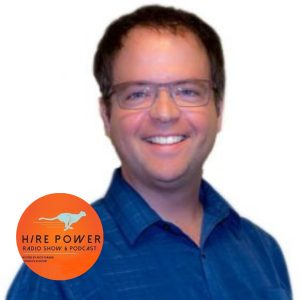
Thursday May 13, 2021
Bias in Interviewing Starts with the Resume with Dr. Michael Neal of Build My Team
Thursday May 13, 2021
Thursday May 13, 2021
What if you completely eliminated the resume from your entire hiring process?
Now you might be thinking, “how is that even possible”? Well, lets’ divulge a few truths about the resume. First, all resumes lie. Not only in what is written but more importantly, what is not. Really the most valuable information on a resume is the contact information and the white space. And the white space is where the truth is found.
Today we discuss how to effectively circumvent the resume to uncover the strongest talent while minimizing your time investment in sifting through piles of resumes.
Our guest today: Dr Michael Neal, Founder & CEO of Build My Team
Dr. Michael Neal is an Eye Doctor in private practice and the Founder of Build My Team. After years of struggling with bad hires, he invented a scientific assessment system to predictably discover diamonds in the rough - all without looking at resumes.
Dr. Neal and Build My Team erase all the guesswork with their scientific hiring process. They remove those who can’t do the job using their unique combination of scientific assessments for mindset, learning speed, motivation, strengths and talents. This saves business owners valuable time and helps eliminate high turnover.
Today we discuss:
- Why we need to kill the resume
- How to effectively hire without a resume
What are the challenges with the resume?
- At the end of the day, leaders just want to know who to hire
- Resumes get in the way every step of the process until the end
- A resume does not tell you anything useful
- Address is the most useful thing (tells commute time)
- Mostly made up- inaccurate information
Why is this important to the company?
- Resumes lead people down the wrong path
- Fictional failure file
- Bias
- Does not tell you who the person is
- Inertia - lead into the funnel
- Replace the resume with a scientific assessment
- 97% accurate
Rick’s Nuggets
- All Resumes LIE
- Hiring for Skills is a recipe for disaster
- This includes Vanity Hires
- A Call to Action is a powerful screening mechanism
- Added to the job description
- Provides insight into the person
How do we solve the problem?
- Be open to a better way
- If the current method is working,
- Enjoy the misery of being on the hiring hamster wheel
- Ready for better results
- Pain: time, emotional,
- Use assessments
- Build your person and identify the superstars
- Reject concept of experience
- Eliminate the con-people and manipulators
- Reverse engineer what the right person looks like
- Being categorically honest
- Accepting the truth- hire people around the leaders
- Identify a specific mindset
- Eliminate entitlement
- Interview
- Do not bring the resume into the interview
Rick’s Nuggets
- Invest the time cultivating Referrals first
- Targeted recruiting
- Job postings
- Discovery Call!
- Determines if the person has the correct positioning first
- Understanding Pain, Desire & Impact
Key Takeaways -Value:
- The stress you are under as a business owner with hiring is totally avoidable
- Replace mediocre team members with superstars
- An 80% staff replacement resulted in an 82% profit increase
Guest Links:
Michael Neal: LinkedIn
Company: Build My Team Facebook
This show is proudly sponsored by Criteria Crop

Thursday Apr 22, 2021
Thursday Apr 22, 2021
It is very possible to share the same core values, yet differ in our religious or political views. This, we must understand when hiring new people.
Now you might be thinking something like “we have a really harmonious team and we don't want someone who will be bringing their strong political, religious or social agenda”. Then build the practice into your corporate values and let it blossom throughout the company.
After all, we are all servants to the “business”. And what is good for the business is innovation, diversity and growth. All of which are fueled by proper value alignment.
Our guest today: Bianca Lager, President of Social Intelligence Corp.
By driving the vision for Social Intelligence to provide productive, ethical and innovative solutions, she has spent her time working closely with Fortune 500 companies and non-profits alike to create safe and discrimination-free workplaces.
Bianca obtained an MBA from Pepperdine University with a concentration in Dispute Resolution and is a LinkedIn Learning Instructor. She is an expert in consumer reporting, focused on online risk for human resources.
Today we discuss:
- Valid reasons not to hire based on a person’s social profile
- How to properly use a social media background check to limit your company liability
What are the challenges with conducting a social media background check
- Violating privacy rights by doing it yourself
- Fed and state laws regarding politics in the workplace
- Whose standards are you using
- Is it related to business outcomes
- Is it fair to the person or the company
- Context is key
Why is this important to the company?
- Disqualification based on personal views does not lead to better business outcomes and could be discriminatory
- Culture fit -
- Diverse teams
- Or single mindset
- Business suffers
- Code of conduct standards
- Avoid someone who is disruptive to the business
- Limits the success of the company
- Who are we or What are we not?
- What is hate speech - how do we define and document that?
Rick’s Nuggets
- Difference in opinion among people who can communicate (agree to disagree) produce magical results
- unintended consequences
How do we implement a proper social media check? Do NOW!
- Review laws in your jurisdiction/jurisdiction of your employees
- Create a policy
- Risk - what is actionable
- Definition of what is acceptable code of conduct
- Stay away from protected class information
- Age, race, sex, religion, political affiliation
- 3rd party solution - defines content and behavior appropriately and consistently
- Violence:
- Intolerance:
- Criminal activity (drugs / stealing):
- Sexually explicit:
- Well documented and legally vetted business related behavior
- Fbi, Anti-Def, SPLC
- Actionable
- Legally defensible position
Rick’s Nuggets
- Preparation is key for everyone that you invite into your organization.
-
- Let your Values policy be known to everyone
- Crystal clarity from the minute they are engaged in the interview process
- Hire for value alignment first
Key Takeaways -Value:
- Formalize your social media screening approach
- Create a simple, 2-3 sentence social media policy based on a basic code of conduct
- Document and stay consistent (Documentation + consistency + policy = Actionable)
Links:
SI Podcast Offer - receive a free sample report along with discounted pricing offer
LinkedIn: https://www.linkedin.com/in/biancacalhounlager/
Websites: https://www.socialintel.com/
Facebook: https://www.facebook.com/socialintelligencecorp/
Twitter: https://twitter.com/socialintelco
Twitter: https://twitter.com/BiancaLager
Instagram: https://www.instagram.com/socialintelco/
This show is proudly sponsored by Criteria Crop: https://www.criteriacorp.com/
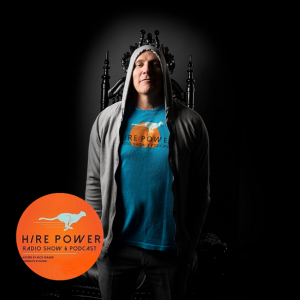
Thursday Apr 01, 2021
Thursday Apr 01, 2021
We can all agree that the only way to 10 or 100x your company is to hire the strongest people. So, what are the strongest people?
The strongest person for your company is a person who aligns with your values first. They understand the mission and they have a strong desire to impact the business because it benefits them first.
Understanding the person across the table does not happen by chance but by a systematic approach to your interview that is designed to gather concrete evidence.
The smartest companies know that cultural alignment is far more critical to a successful hire than merely a person’s skills.
Today we discuss:
- The value & pitfalls of a hiring system
- How to implement a hiring operating system into your company
What is a hiring operating system? The step by step process by which your company successfully hires.
Challenge today?
- In any market, care needs to be taken when hiring
- Right person, Right seat … Jim Collins - Good to Great
- Time pressure
- Hiring is a guessing game
- Likability/commonality
- Skills
- Bias - educational background, company history (assumed success)
- People hired are not properly positioned for your unique company
- Builder, Improver, Maintainer
- Hiring Process is common, weak or unorganized - Key indicator of how the business is run
- People are systems resistant.
- Systems are the key to success
Why is this important to the company?
Operating Systems
- Save time & money
- provide structure & clarity
- Build accountability
- Build effective practices
- Attract talent
- A- players are drawn to successful opportunities
- Systems Win
- Business operating systems (EOS, scaling up, Strategic Coach, MAP)
- IDC: Companies lose 20-30 percent of revenue each year due to ineffective business practices
- https://www.entrepreneur.com/article/286084
- https://www.forbes.com/sites/jeffboss/2016/11/01/5-ways-your-business-processes-could-be-hurting-your-business/?sh=6b39e50452e9
How do you build your hiring operating system?
Foundation
- Values first
- Own it- embrace the truth
- Be transparent about the Good & Bad
- No one believes your company is perfect
- Build Interview Question Library
- Craft Behavioral questions (2-3)
- Determine **Knockouts
- Agree on questions
- Establish Interview Structure
- Timeline Commitment
- Define Format
- Outreach / Application
- Intake Process - discovery call
- Interview
- Assessments/Tests (not too soon)
- Decision
- Build Job Description Template
- Understand Performance Metrics
- Build Call to Action Questions
- Assign Questions
- to Interviewer position (order of importance)
- Assemble Interview Team
- 3 teams of X
Execution
Rules of engagement
- Discovery/Screening call
- Assessment over Resume
- Time up front saves pain in the end
- non-transactional
TRAINING!!!
- Behavioral Interview
- Bias annihilation
- Knock Out’s
- Role playing exercise
- Interview question tweaking
- Iteration of follow up questions
- Solidify questions
- Logging data
- Wrapping up interview & Handoff
- Gather feedback
- Dismissal
- Role Playing wrap up
Key Takeaways -Value:
- Systems -breed success and eliminate all the things that keep you up at night
- Prioritize owning a hiring operating system that attracts the strongest people to your business
- Train your people how to interview to gather evidence to support the hire
Links
LinkedIn: https://www.linkedin.com/in/rick-girard-07722/
Websites:
https://www.stridesearch.com/hire-power-radio
https://www.stridesearch.com/rick-girard
Facebook: https://www.facebook.com/HirePowerRadio/
YouTube: https://www.youtube.com/channel/UCeEJm9RoCfu8y7AJpaxkxqQ
This show is proudly sponsored by Criteria Crop: https://www.criteriacorp.com/
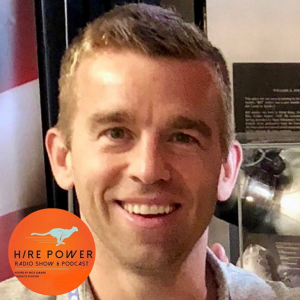
Thursday Mar 25, 2021
Thursday Mar 25, 2021
If hiring right is so critical to the organization, why is interviewing the one action that is entirely left up to chance? It has been my experience that virtually zero small companies invest in training their people how to interview.
This was the experience of an extremely successful executive, Jeff. Who at the C-level had only attended a one hour session of interview training in his whole career…. 10 years ago.
It is assumed that most leaders already know how to interview but the truth is that they don't. Most of us know how to talk skills and look for likable traits. But the process is riddled with bias and assumptions. Missing the evidence that is so critical in hiring the strongest person for the role.
Our guest today: Adam Stonehocker, Head of Sales at Gemini
Adam is the head of Sales at Gemini, a data visualization company that helps executives make key decisions involving their most important asset, their people. He has led sales teams for Peek, Google, Twitter, Pandora Radio, and AdRoll, EBay.
Adam has hired over 500 salespeople throughout his career and trained his leaders to interview with purpose.
Today we discuss:
- Why you need to invest in training your people how to interview
- How to train your people to interview effectively
There is a belief that there is no right way to interview and in the end it all comes down to “trusting your gut” and pulling the trigger... So wrong in every way!
Why don't companies invest in interview training?
- Attrition was 20% per month with poor hiring
- Team only hit 85% of goal for the year
- Culture was terrible
- Top performers said “your hiring anyone who can breathe”
Why is this important to the company?
- Without recognition & change top performers would have left
- Interview team has no idea how to identify the right people,
- You have to get the right people on the bus
- Upper management not happy
- Costs a lot of money when you have a leaky bucket
Rick’s Nuggets
- Every company should prioritize training everyone who interviews for the company
- Systems put in place maximize productivity & efficiency of your employees
How do we solve the problem?
- Identifying core values & culture that you want to hire for
- Make sure everyone is on the same page
- Hiring managers, recruiters,
- Structuring the Interview guide
- Gauging the competencies in the interview guide
- Coachable: Role play exercise to implement feedback from prior interviewer
- Training
- Values we’re looking for
- Interview guide gauges those values or competencies
- Role playing with each other
- Using the interview guide as a script
- Feedback loop and discussion from the group
- Reps/future managers take part in calibration and interviews
- Quarterly calibration
- Continually updating the interview guide
- Have your needs changed?
- Are there questions that aren’t pulling the right competency
- Problem questions that most people stumble on?
- Feel of the interview, is it intense or laid back and fun? Your interview feel should match your culture
Rick’s Nuggets
- Write behavioral questions that uncover evidence to support your company values
- Write follow up questions for deeper digging
- Assign to each team member
- Role play
- Practice makes proficient
- How did that work?
Key Takeaways :
- Define your values/culture
-
- Everyone on the same page, looking for the right types of talent
- Only then can you ABR (Always Be Recruiting)
- Structure your interview guide to gauge value competencies
- Set up quarterly calibrations to refine interview guide, interview skills,
- This is where your team continually sharpens the saw,
- Feedback loop on interview process
Links:
LinkedIn: https://www.linkedin.com/in/adamstonehocker/
Websites: https://gogemini.com/
This show is proudly sponsored by Criteria Crop: https://www.criteriacorp.com/
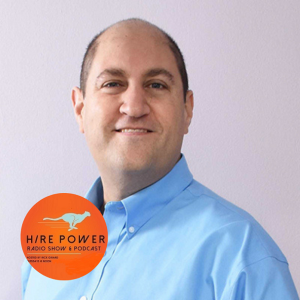
Friday Mar 19, 2021
Friday Mar 19, 2021
Thinking about the people you hire as objects or obstacles to achieve your company goals is poison.
Often we venture into the hiring process with the mindset of “how can YOU help ME”. This is wrong in so many ways. Especially if your goal is to fuel the growth of the organization.
The truth is, the people you hire could care less about you and your goals. This is why people take your job simply for the paycheck and bounce at the first hint of trouble.
Understanding the other person’s pain & desires allows you to connect the dots, for both parties, of how they can bring maximum impact to their careers and the company.
Our guest today: Jonathan Domsky, Founder of Untangled Coaching
An entrepreneur since he was 24 years old, Jonathan uses many of the same tools as a traditional business coach—goal setting, accountability, best practices. But his purpose in life is teaching personal mastery.
Jonathan’s superpower is to distill this wisdom into practical, easy to understand, and simple to apply tools that will make your life more easy, meaningful, and joyous. To untangle the clutter in your business and life so that you can be your best, most authentic self. And most importantly—see a clear path on how to get from where you are right now, to living your beautiful future.
Today we discuss:
- Why you need to change your hiring mindset
- How to shift your mindset to fuel growth
Challenge today?
- Hiring manager hires people who are not a good fit for the company.
- Only thinking about what’s in it for me
- Not long term
Why is this important to the company?
- Behavior drives results. But what drives behavior? Training and incentives aren’t enough. The answer is mindset
- Outward mindset is a tool, a lens, that gets everyone on the same page
- Side steps personal issues to allow focus on the organization
- It allows space to find solutions to things that aren’t working
- Change success metrics (data point)
Rick’s Nuggets
- Shift from listening to answer to listening to understand
- Need to fill & ego drive hiring. Period
- Result 51% bad hires
How do we solve the problem?
- Seeing others as having needs, challenges & objectives of equal importance to our own
- First ask- what is needed?
- Remind yourself “am I doing what is in the best interest of all parties”
- Realize the impact that has been received by you in your career
- Can you state the top three goals and objectives of key coworkers?
- How does what you do affect other people in the organization?
- Adjust efforts to actually help them
- Make a list of the objectives, needs, and challenges that belong to the people you impact in the organization--peers, manager, direct reports, candidates. If you aren’t 100% sure, ask them. Evaluate how you are helping these people accomplish their objectives, meet their needs, and face their challenges. Make a list of ways you can improve
- If the success metrics and incentives in your organization are inward, then an outward mindset is unlikely to have a lasting impact. Change those metrics so that they are focused less on what you do and what you get, and more on how what you do affects others
- What are your current metrics around Selection and Onboarding--do job descriptions and training simply describe what the employee is hired to do? Or does it also explain why they do what they do, and what is the desired impact?
- Reporting Practices--are they used to control and monitor or to empower?
- Incentives and Compensation and Performance Management--Are people rewarded for individual performance, or for accomplishing group goals?
- What are negative effects of inward thinking in these areas? What are ideas to approach this with an Outward mindset?
- Measure results
- Check in to see that their needs were actually met. Adjust your efforts accordingly
Rick’s Nuggets
- First- Understand what the business needs, not your ego
- Second- Understand what the person needs for themselves
- Third- Connect the dots
- Value load every challenge into the person’s desires and allow them to make an impact
- Metrics: Time saved, interview experience
Key Takeaways -Value:
- Are the success metrics in your organization inward or outwardly focused? How could you make them more outward focused in order to experience less drama and conflict?
- Carefully consider this statement--As far as I’m concerned, the problem is me. I am the place to start.
- Who is one person who needs more from me than I am currently giving? What more could I begin to contribute today? How could I know that my actions made their life easier?
Links:
LinkedIn: https://www.linkedin.com/in/jonathan-domsky/
Websites: https://untangled-coaching.com/
Facebook: https://www.facebook.com/jonathan.domsky
YouTube:https://www.youtube.com/channel/UCCtBAgyPKr5_-boeLjQWFGA
This show is proudly sponsored by Criteria Crop: https://www.criteriacorp.com/
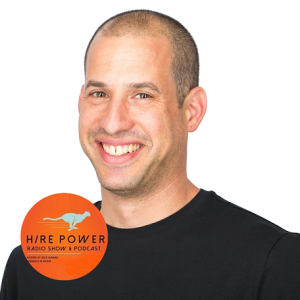
Thursday Mar 11, 2021
When to Hire Freelancers vs Full Time Talent with Shahar Erez of Stoke Talent
Thursday Mar 11, 2021
Thursday Mar 11, 2021
Do you really need a person full time or will a freelancer suffice? Often the need to get work done clouds our vision who we really need.
Ask yourself, “what does the business need?” and what is the timing in which the work needs to be done. When you need something quick, you most likely need a freelancer. But know that your explicit communication is the key to successful project completion.
Just don’t shortcut the selection process and hire those who get it, want it and can deliver results.
Our guest today: Shahar Erez, Co-Founder & CEO of Stoke Talent.
An experienced executive with solid engineering, product and marketing leadership backgrounds backed up by sound results. He has more than 15 years of experience in various management positions in a wide range of organizations building stellar teams and leading them to new levels of success in highly competitive markets.
Shahar has hired hundreds of Freelancers throughout his career and is here to share his expertise.
Today we discuss:
- When to hire freelancers vs full time talent
- Roadmap to how to most effectively hire freelancers
I struggle with the notion of hiring freelancers as I have time challenges in communication of expectations
Challenge today?
- There was no flood in the market of talent
- Cultural challenge
- Mental barrier
- Freelancers
- Compliance & back office challenges
Why is this important to the company?
- Get the right talent
- Agility to move fast
- Flexibility & budget control
- Quick time to hire
- Try before you buy
Rick’s Nuggets
- Even freelancers need to align with your company values
- They are part of the culture
- When values align & expectations are clearly defined the quality of work skyrockets
What is the process for hiring freelancers?
- Open to the possibility of freelancers
- No strings attached
- Budget flexibility to get work done quickly
- Training managers on what it is to manage & hire freelancers
- No need for a full interview
- Lower Expectations
- Very clear on deliverables- what to happen & when
- Start with a 2 week project
- Define deliverables
- How to operate in the two weeks
- Clear communication- more important than full time employees
Rick’s Nuggets
Interviewing Freelancers
- Must have a strong Discovery / Screening call - do not shortcut!
- Understand the person’s pain, desire & impact
- Why do they want the work??
- Every person you add has an influence on culture
- Do they get it, want it, and have the capacity to do the work? - Gino Wickman
- Do not hire if they are just there for the paycheck
Key Takeaways -Value:
- Number of independent contractors are growing and will make more than 50% of workforce within the next 5 years
- Prepare your organization and leaders to operate within this new workforce composition model
- You should treat this as strategic shift and get a platform to assure you are managing this correctly
Links
LinkedIn: https://www.linkedin.com/in/shaharer/
Websites: https://www.stoketalent.com/
Facebook: https://www.facebook.com/stoketalent
Twitter: https://twitter.com/shaharer
Twitter: https://twitter.com/stoketalent
This show is proudly sponsored by Criteria Crop: https://www.criteriacorp.com/
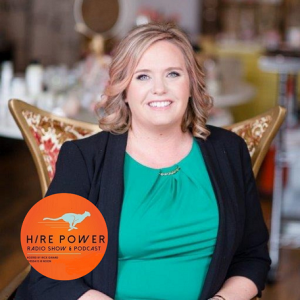
Thursday Mar 04, 2021
Thursday Mar 04, 2021
How many resumes do you need to see to fill a role? Let’s take it a step further. How many people do you need to interview to fill a role? If you guessed One, you are correct!
So, what is wrong with Gloria wanting to wait to interview other people before making a decision on the person that was just interviewed?.......Everything!
Waiting to interview other people is a ridiculously clear beacon that you have a weak interview process. Not being able to gather enough data and make a decision within 24 hours is not only a waste of your time, but the other person’s as well.
Comparison shopping is how bad hiring decisions are made.
Our guest today: Jodi Brandsttetter, Chief Talent Strategist of Lean Effective Talent Strategist, LLC
Jodi is passionate about talent acquisition and uses design thinking in creating selection and hiring processes focused on people and business. She is certified through IDEO U in design thinking.
Jodi is the CEO and founder of Lean Effective Talent Strategies which includes The Hiring Blueprint, talent acquisition consulting firm and Talent Acquisition Evolution, a community for recruiting professionals to connect, learn, and work together.
Today we discuss:
- The dangers of comparison shopping when it comes to hiring
- A plan of attack to enable quick decision making for each individual interviewed
Why do we feel like we want to see more people before we make a decision?
- The hiring manager lacks confidence in making a decision with just one interview.
- Being able to communicate the desire skill set and experience needed to find the best candidate
- Understanding the motivators
- Miscommunication between the manager and recruiter on the best candidate for the role
- Or no communication between the manager and recruiter
- Not everyone is the same person- shrug off bad hires
- Stupid Assumptions!
Why is this important to the company?
- Having confidence in pulling the trigger with the first person will lower time to hire/fill.
- By hiring the first person who is align with the role, there can be a positive impact on the business in a faster time frame.
- Builds a stronger relationship with the hr/recruiting team when a hiring manager knows what they need and able to make decisions in a timely manner.
People will judge you based on the quality of your questions. Therefore, your interview questions must be intentional and have a specific purpose.
How do we solve the problem?
- Recognize that you do not have the tools and experience in hiring to have real confidence in your hiring decisions.
- Join Hiring Managers Anonymous, a community for hiring managers who have a hiring problem.
- Step 1: Admit that you have a hiring problem
- Step 2: Believe that there are tools and training available to help you.
- Step 3: Find training and tools to help you become a confident hiring manager.
- Step 4: Start your learning journey with the training & tools
- Step 5: Make a Candidate Persona to understand who your ideal candidate is and focus on them.
- Step 6: Communicate with your recruiter/recruiting team so that they can find the ideal candidate for you.
- Step 7: Use the training and tools to make decisions while interviewing.
- Step 8: It is ok to fail. Shake it off and try again.
- Step 9: Be open to feedback and continue to improve.
- Step 10: Once you become a confident hiring manager, carry this message to other hiring managers and continue to practice these principles.
- 10 Step Program to Help Build Confidence in your Hiring Decisions
- In order to have the confidence, you need help.
- Join Hiring Managers Anonymous, a community for hiring managers who have a hiring problem.
Rick’s Nuggets
- Interview questions are the root of interview failure
- Questions must be tied to corporate values
- Linked questions have purpose & produce evidence
- Eliminates bias
- Promotes diversity in thought & experience
- Train your employees how to interview
- Assign interview questions
- Conversational evidence gathering
Key Takeaways -Value:
- Join Hiring Manager Anonymous and find training and tools that will help you have confidence in hiring.
- Use a Candidate Persona to create your ideal candidate.
- Communicate who your ideal candidate is to your talent acquisition team and work in collaboration with them.
- Be willing to fail. It is the only way you can learn.
Links
LinkedIn:https://www.linkedin.com/in/jodibrandstetter/
Websites: https://letscincy.com/index
Facebook: https://www.facebook.com/letscincy
Twitter: https://twitter.com/jodi_recruiter
YouTube: https://www.youtube.com/channel/UC2BNdy2kafFSs-cimLyBPBA
https://www.youtube.com/channel/UCToc02W0GAFHMhXWJZIbhxQ?view_as=subscriber
This show is proudly sponsored by Criteria Crop: https://www.criteriacorp.co

Thursday Feb 25, 2021
Beating The Job Description Dead Horse with Mark Herschberg of The Career Toolkit
Thursday Feb 25, 2021
Thursday Feb 25, 2021
Why do I need to waste my time writing a job description? You might ask.
The answer is: To save Time … & be able to Sleep
The Job Description is there to evaluate how successful the person you hired is in the role they were hired for. Consider it the essential evaluation tool to manage expectations... A syllabus for success.
Investing the time up front will allow you to set the performance metrics the person needs to achieve in the critical first 90 days. Thus cementing quantifiable data to ensure a successful hire.
And that just helps all parties sleep better at night!
Our guest today: Mark Herschberg, MIT instructor, CTO, & Author of The Career Toolkit
From tracking criminals and terrorists on the dark web to creating marketplaces and new authentication systems, Mark has spent his career launching and developing new ventures at startups and Fortune 500s and in academia.
He helped to start the Undergraduate Practice Opportunities Program, dubbed MIT’s “career success accelerator,” where he teaches annually. Mark helped create a platform used to teach finance at prominent business schools. He also works with many non-profits, including Techie Youth and Plant A Million Corals.
He was one of the top-ranked ballroom dancers in the country and now lives in New York City, where he is known for his social gatherings, including his annual Halloween party, as well as his diverse cufflink collection.
Today we discuss:
- Why Job descriptions are critical to the success of your company
- How to craft job descriptions that positively impact the organization
Challenge today with Job Descriptions?
- Vague
- Too much redundant information
- Missing information
- Break down what the tasks are ie:% of time
- Understanding the skills
- Defining soft skills
- Technical knowledge- not digging deeper
- Throwing up barriers
- Unclear job description leads to unclear evaluation of the interviewee
Why is this important to the company?
- We waste a lot of time interviewing the wrong people
- We hire for the wrong reasons
- Breeds a underperforming team
- Infects the culture
- Domino effect downgrading the business
- No compensation for a good teammate
Rick’s Nuggets
- A job description is not a wishlist of skills
- Job description and job advertisement should be the same document
How do we solve the problem?
-
- Working backwards
- Define the specific attributes that are wanted
- Uncover the why
- Similar mentality bread into the person
- Industry
- Write the job description
- Start with a selling point
- Getting everyone on the same page
- Define the interview questions
- uncover how the person fits the company
- Working backwards
Rick’s Nuggets
- What’s in it for me? (pain)
- Problems solved
- 90 day performance metrics
- Includes hard & soft skills
- About us
- Call to Action
- Homework before resume submittal
Key Takeaways:
- Step 1 of hiring: define the role, including the qualities you’re looking for, beyond just knowledge and experience
- Step 2: make sure everyone on the hiring team is clear
- Step 3: make sure the questions you ask align to evaluating on what you’re looking for
Links:
LinkedIn:https://www.linkedin.com/in/hershey/
Websites: https://www.thecareertoolkitbook.com/media
Facebook: https://www.facebook.com/TheCareerToolkitBook
Twitter: https://twitter.com/markaherschberg
Twitter: https://twitter.com/CareerToolkitBk
Instagram: https://www.instagram.com/thecareertoolkit/
This show is proudly sponsored by Criteria Crop: https://www.criteriacorp.com/
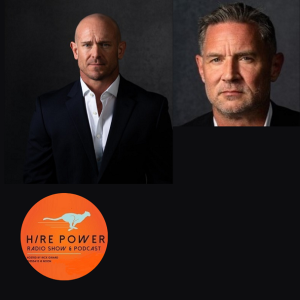
Friday Feb 12, 2021
Friday Feb 12, 2021
Think what you may about the military but the truth is they hire better than you!
They developed and refined a process that, over time, has ultimately uncovered those individuals who exemplify the core values that are critical to the success of the organization and the mission.
A strong commitment to We, before Me! …which is what your company needs
Today is about lessons learned from Special Forces that you can apply to your company, to ensure that you are hiring the people who also share your company's core values.
Our guests today: Michael Sarraille, Founder & CEO of EF Overwatch, & George Randle, managing partner at EF Overwatch & Head of Global Talent Acquisition of Forcepoint.
Mike Sarraille is a former Recon Marine and retired US Navy SEAL officer with twenty years of experience in Special Operations, including the elite Joint Special Operations Command.
George Randle is a former US Army officer, and Vice President of Global Talent Acquisition at Forcepoint, a human-centric cybersecurity company. George has more than two decades of experience in talent acquisition at Fortune 100 and Fortune 1000 firms.
Today we discuss:
- Why it is critical for values to align with the mission
- How to Model Military Special Forces in Hiring Talent
Can we all agree almost every core business problem can be traced back to a people problems?
Knowing this, why do we set ourselves up for failure by hiring the wrong people?
Challenge today?
- Companies are terrible at hiring
- Not the best leading recruiting
- Actions don't reflect people importance
- Wrong people leading people
Why is this important to the company?
- If you don't achieve strategic competitive advantage over people, you will fail
- Weak HR function- CEO’s need to empower HR to breed success
- Every business function starts with people
- Costs are 213-1500% for a senior executive bad hire
- Direct cost- 2-15x the person's salary ($3400 per every 10k in salary)
- Indirect cost- disengaged employees
- Run out your A-players
Rick’s Nuggets
- Disengaged employees are easier to pluck out of your company when leadership is compromised
How do we deploy into your company?
- Focus in talent management solutions
- Talent diagnostics
- Leading in talent management first
- Starts at the top
- Investing into your people
- Constant Training (less than 1% of companies do this)
Key Takeaways:
- Look in the mirror
- Treating your human capital as discipline, rigor & focus as you do on your financial?
Links:
LinkedIn:
https://www.linkedin.com/in/michaelsarraillemba/
https://www.linkedin.com/in/georgelrandle/
Websites:
Facebook:
https://www.facebook.com/efoverwatch/
https://www.facebook.com/talentwargroup/
Twitter:
https://twitter.com/MJSarraille
https://twitter.com/EfOverwatch
https://twitter.com/talentwargroup
Instagram:
https://www.instagram.com/efoverwatch/
https://www.instagram.com/talentwargroup/
This show is proudly sponsored by Criteria Crop: https://www.criteriacorp.com/

Thursday Feb 04, 2021
Remote Interviewing Done Right with Brenna Loury of Doist
Thursday Feb 04, 2021
Thursday Feb 04, 2021
The remote interview is still a HUGE challenge for a lot of companies. Especially for those of you who are lacking a formalized process.
Simply evaluating skills and heavily relying on “vibe” to influence decisions is producing even worse results in this work from home environment.
Too much is able to remain hidden because video is limiting on the non-verbal cues that happen in the interaction.
Assumptions, bias and misinformation have become the new plague in today’s interview.
Today is about nailing your video interviews to ensure the strongest hire!
Our guest today: Brenna Loury, Head of Marketing for Doist.
Brenna Loury knows that the road to success isn’t a path you find — it’s a trail you blaze.
Fueled by her unorthodox marketing efforts, Brenna left her PR firm and joined Doist full-time in 2014. She handles everything from overall marketing strategy, to HR duties, to writing website copy. She’s helped expand Doist’s remote-first team from 5 to 92 employees in over 30 countries, and her grassroots marketing strategies have helped bring the company over 25 million users globally.…And everyone is remote!
Today we discuss:
- Why the Video Interview is so challenging today
- How to master the video interview
Challenge today?
- Not meeting in person
- Touch points have gone away
- Video interviews - change in format
- Onboarding
- Hire based on core values
Why is this important to the company?
- 98% employee retention rate
- Benefited the business
- People are happy and the quality of work
- Willingness to go above and beyond
Rick’s Nuggets
- Limited view of subject
- Uncomfortable/unnatural interaction
- Breeding ground for assumptions & unconscious bias
How do we build into your company?
- Same interview process across the company
- Structure
- Hiring committee (3 people)
- 1 hour interview
- Add insight question for people who submit a resume
Cultural Interview - team manager
- What are the challenges that Doist’s products are trying to solve that most excite you? (did they do their homework?)
- How might you improve our landing pages/XYZ? (can they be radically candid?)
- Tell me about a time in your personal life or at work when you had to be very detail oriented.
- Tell me about a time when you completed a project 100% on your own. How did you get started and what was the outcome? (can they work autonomously?)
- What’s the last good book that you read? (interests/life outside of work)
- Favorite apps on your phone? (interests/life outside of work)
Technical- person assigned (senior people)
- Judging the skills
- Can you tell me about a company that you think does a great job at product marketing?
- What are the advantages/disadvantages of using CSS preprocessors?
Test Project
- Pay people to do the work
- Examples:
- Create a week-long social media plan
- Write a blog post about a product update
- Create a Hacker News style reader
Cultural Final - leader/executive
- Covers 5 core values: Mastery, Independence, Communication, Ambition & Balance, Impact
- Behavioral questions:
- What’s the difference between someone who’s good in your field versus someone who’s outstanding?
- Tell me about a time when you disagreed with a team member. How did you approach that situation?
- Tell me about a time that you went above and beyond what was expected? What motivated you to do so?
- Behavioral questions:
Rick’s Nuggets
- Phone Screen / Discovery Call
- Pain, Desire, Impact
Key Takeaways:
- Prioritize hiring for cultural fit – some technical skills can be learned later on the job
- Do everything you can to cultivate an environment that values trust over tracking
Links:
Website: https://doist.com/
Blog: https://blog.doist.com/
Twitter: https://twitter.com/doist, https://twitter.com/brennakL
Relevant blog posts:
This show is proudly sponsored by Criteria Crop: https://www.criteriacorp.com/
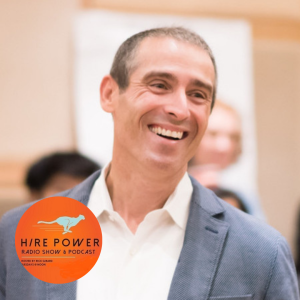
Thursday Jan 28, 2021
Thursday Jan 28, 2021
High performance teams don't just happen by chance. They are artfully built with an impenetrable culture at its heart.
The people who join are in alignment with the values and purpose of the organization. The result is unrivaled performance above and beyond your expectations.
Our guest today: Greg Besner, Founder and Vice Chairman of CultureIQ
A global company that helps organizations create high-performance cultures. He and his firm have assisted more than one thousand organizations and millions of employees strengthen their company culture.
Greg was an early investor in Zappos which inspired his commitment to organizational culture. In 2018, he was ranked in USA Today as the 8th best CEO in the United States among a pool of 50,000 companies. He was also named the EY Entrepreneur Of The Year®.
Today we discuss:
- Why, if you are serious about your business, you need to prioritize your company values as the heart of your hiring decisions
- How to deploy a process to enable your company to hire people who continually raise the bar for performance
I find that often the phrase “not a good cultural fit” is an easy cop out line for a company to pass on people. When asked “HOW” the conversation quickly disintegrates.
How can someone not really make that conclusion when they lack clarity on what their culture/purpose is?
Challenge today?
- Recruiting for purpose/ culture alignment
- Zoom interview
- Body language/ energy
- Human interaction
- Interact in the environment around them
- Fumbling with this new interview process
- Onboarding
- Energy of the office not really happening
- Interpersonal mingling
- Because the human interaction is missing
- Elevates chance of bias
- People are uncomfortable in a video interview setting
Why is this important to the company?
- Culture alignment
- Diversity of experience, perspective
- Recruiting process is opposite of what it is today
- Expensive to recruit & train
- Turnover is expensive
- Employees who are not aligned with the purpose are expensive
Rick’s Nuggets
- Bias is a two way street
How do we build into your company?
- First interaction is a 2 sided conversation- human interaction
- Experience of working in the organization
- Company go first
- Let the person give their elevator pitch
- What would allow them to be successful at the company
- Having a framework
- Notes should be taken, structured, & details on their values
- Mutual agreement on moving forward
- Letting the person know the next steps
- Transparency
- Closure
- Interviews
- Teammate or HR first
- Try not to replicate the interview!
- Multi-step process
- Split up to cover different roles
- values from skills
- No need to cover the same questions
- hire bar raisers
Rick’s Nuggets
- First interaction: Discovery call
- Understand Pain, Desire, Impact
- Listen to understand first
- Buy in through connecting the dots
- Presenting back what fits, & what does not
Key Takeaways:
- Bar Raisers-
- Structured Interview Process
- Transparency in Hiring Process
Links
Email: greg@cultureiq.com
LinkedIn:https://www.linkedin.com/in/gregbesner/
Websites:
http://theculturequotient.com/
http://getsunflow.com/
Facebook: https://www.facebook.com/CultureIQ/
Twitter: https://twitter.com/cultureiq
YouTube: https://www.youtube.com/channel/UCSECYe1wg_KxMi_yNi7KQbA?view_as=subscriber
Instagram:https://www.instagram.com/cultureiq/
This show is proudly sponsored by Criteria Crop: https://www.criteriacorp.com/
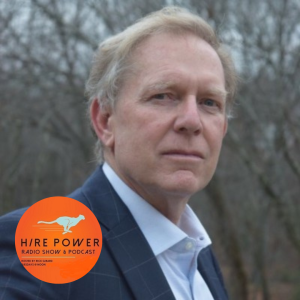
Thursday Jan 21, 2021
Thursday Jan 21, 2021
One bad hire in your startup negatively affects your balance sheet and is the fuel to future boardroom conflict.
Often, we entrepreneurs feel the pressure to fill our roles at the expense of elevating our people's performance. This disintegrates the company values and results in the exit of your strongest players.
Today is about hiring “gravitators” and avoiding the “disintegrators” that will surely be the subject of boardroom conflict.
Our guest today: Rod Robertson, Founder & Managing Partner of Briggs Capital.
Rod is an international entrepreneur and co-author of the book The Human Vector. He has conducted business in over 15 countries while focusing on developing small-to-medium-sized businesses and taking them to market worldwide.
Robertson’s career in transaction experience and entrepreneurship includes guest lecturing around the globe at institutions such as Harvard Business School and other top-flight MBA schools as well as business forums and news outlets worldwide. He sits on numerous boards, guiding firms to streamline operations and make businesses more profitable before selling.
Today we discuss:
- The difference between hiring a gravitator vs a disintegrator
- Why this is important to your board of directors
- How to gain evidence to support hiring the right person - a Gravitator
Challenge today?
- Companies have no room for error in hiring
- Hiring folks that can contribute to increased value of the firm
- Boards are looking at the income statements & balance sheet
- Are they cohesive with growth strategies?
- How to assess quickly to unload non performing employees
Why is this important to the company
- In 2021 the PPP bailouts have run their course - no margin for error
- Your hires must stick - no “numbers game” in hiring
- The co culture equal to individual go
Rick’s Nuggets
- A speedy hire often results in a miss hire
How do we fix this issue in your company?
- Bring on more outside Board of Advisors (not traditional Boards) to analyze and share the responsibility of hiring and layoffs
- Human Vector
- Systematic approach to maximizing employee performance
- GRAVITORS can change employees “angle” to the” Vector”
- INTEGRATOR -manager who accelerates integration of employees
- FUNNEL OF VECTORS acceptable deviation of employees from company values
- DISINTEGRATORS a disruptive employee
- Attributes as they relate to the goals of the company
- Management hiring and termination based more then ever on cash flow
- Quantitative analysis trumps culture for now
- $1.9B stimulus will prop up economy for six months then economic slide predicted for balance of 2021 thru 2022
- Small to medium size businesses must pivot quicker then ever
- Using outside Board members or advisors to make quantitative decisions should be utilized
Rick’s Nuggets
- Behavioral Interview
- Tie interview questions to your company values
*Knockout:
- Tell me about your most difficult Customer interaction (give wow)
- What were the circumstances that led to the difficulty?
- Break down the steps you took to resolve the problem
- What was the root of the customer issue?
- What solutions did you come up with?
- How were you able to calm them down?
- How were you able to deliver beyond their expectations?
- How did the interaction end?
- Why was their view important to you?
Key Takeaways:
- During these difficult times, systematic hiring and termination most adhere to a firm’s financial
- Outside Advisory input can bring clarity to growth and/or scaling back strategies
- It’s a perfect time to shake up your roster!
Guest Links:
LinkedIn: https://www.linkedin.com/in/roderickrobertson/
Website:www.briggscapital.com
This show is proudly sponsored by Criteria Crop: https://www.criteriacorp.com/
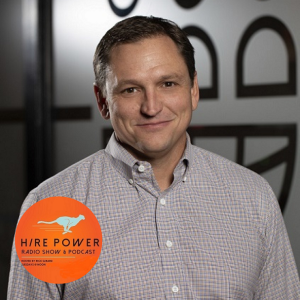
Thursday Jan 14, 2021
Thursday Jan 14, 2021
There needs to be a deliberate cadence to your interview process.
Just like a first date, you wouldn't say “hi, I'm Rick. before we start the date, I’d like you to complete this sexual survey and if I like your answers, we can continue the date.”
Now it may work on some people. But the question you need to ask yourself is who exactly are you weeding out? Answer… A-Players!
Today we are talking about the pros and cons of screening mechanisms and the proper order to deploy them to keep people engaged.
Our guest today: Joel Patterson, Founder of The Vested Group
A business technology consulting firm in the Dallas, Texas area, and ForbesBooks author of The Big Commitment: Solving The Mysteries Of Your ERP Implementation. In 2011, Patterson founded The Vested Group, which focuses on bringing comprehensive cloud-based business management solutions to start-ups and well-established businesses alike.
Joel has hired hundreds of engineers & consultants and has learned a lot about what works in an interview process.
Today we discuss:
- Why a proper cadence is so critical in keeping top talent engaged
- How to set the correct sequence to avoid triggering “fight or flight” in top talent
Challenge today?
- Saving your time with a video screen first
- Wasting a lot of time with interviews of unqualified people
- Need to be efficient with people's time- billable resources
- Elevated the quality of the people hired
- Not as many bad hires
- Missing out on good talent?
- Do people want to jump through hoops?
Why is this important to the company?
- Cost to replace a person
- 100-150k loss per person lost
- Culture impact of people coming and going
- Sunday test- call on a sunday
Rick’s Nuggets
- Are you losing the top 20% in your screening efforts
- Transactional
- Value driven
How do we build into your company?
- Video - one way
- Phone screen
- Video Interview
- 2 sessions
- Job score card
- Core value
- Case Study to do
Rick’s Nuggets
- Discovery call (Positioning)
- PDI (Pain, Desire, Impact)
- Interview
- Culture, skills, culture, combo
- Behavioral questions
- Assessments/Assignments/Skills test
- Prefer working session to determine skills
- Connect the dots
Key Takeaways:
- Core values drive hiring/firing decisions
- Interviewers represent cross section of experience and skills levels (AMA)
- Providing purpose quickly is critical to long term hiring success
Guest Links
LinkedIn: https://www.linkedin.com/in/pattersonvested/
Website: http://www.thevested.com/netsuite-provider-the-vested-group
Facebook: https://www.facebook.com/VestedGroup/
Twitter: https://twitter.com/TheVestedGroup
YouTube: https://www.youtube.com/channel/UCHDBLjRuMtER5yUrPhZYKkw
This show is proudly sponsored by Criteria Crop: https://www.criteriacorp.com/
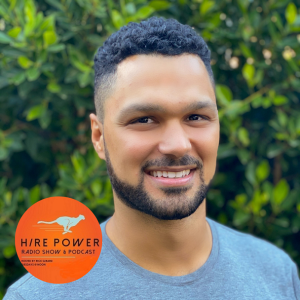
Saturday Jan 02, 2021
The Reality of Vanity Hires with Greg Toroosian of Elevate Hire
Saturday Jan 02, 2021
Saturday Jan 02, 2021
“We really need to hire a person from xyz company and they need to be from a top tier school.” Words that make every recruiting professional cringe.
This criteria is the perfect storm for making the worst hire of your career. The Truth is, Your ego WANTS these things but the business needs a person with the RIGHT DNA to fuel company growth.
Our guest today: Greg Toroosian, Founder & Managing Director of Elevate Hire
Having worked for startups, globally recognized brands, and recruiting agencies, he brings a unique perspective, a fresh sense of understanding, and an elevated level of service to his clients.
He previously held the roles of Recruiting Manager for Virgin Hyperloop and Director of Talent Acquisition for Sweetgreen. Greg believes that recruiting and retaining talent is key to having a successful company.
Today we discuss:
- Setting expectations of what you can REALLY hire
- How to hire what you can Really hire
There are 2 ways to hire A-level talent
- Pay for them
- Be the solution to their career wounds
Challenge today?
- Overall value proposition
- Competitive market
- Hard to find or in demand roles
- Stage of growth
- Disconnect on what the market really is
- budget
- Clarity on what you are actually hiring for and why
- Coming back to earth on what is really needed
Why is this important to the company?
- Impact time to hire
- Help to hire the right people
- Think through their recruiting strategy
- Help with financial planning
How do we build into your company?
- Build your value proposition
- What is it to your employees
- Cultural element
- How to communicate you culture
- Honest and open about What your culture really is
- Allow people to opt in/opt out
- Business element
- What the work is
- Product/ service
- Social good, clean energy, industry
- Clear about how it is different from their competitors
- Personal/Professional element
- What’s in it for me?
- What will I learn?
- What will this do for my career?
- Clarity On what needs to be done
- What really needs to be done?
- First hire??? Now what?
- Clarity helps to target the right people, industries, competitors
- Gain clarity on what success looks like for this role
- Understanding the competitive market
- Clarity on what you are hiring for and why
- Common complexity of what is being built
- Reality check on what you NEED to be paying this person
- Who else you are in competition with for that person
- Solutions if the role cant flex
-
- If the person you need is unhirable?
- Competition, salary, location, level of skill, small pool
- Training & molding a person intro the role
- Contractor, fully remote,
Key Takeaways:
- Craft and solidify your EVP - at least for your company. Use the cultural, business, professional buckets to help.
- Be mindful of the market you’re hiring in and self aware of your company's positioning.
- If hiring the people you want or the way you want aren’t currently realistic, then consider creative ways of making your offering more attractive or creative ways of getting the work done.
Guest Links:
LinkedIn: Greg Toroosian
Website: Elevate Hire
Twitter: Toroosian
Email: greg@elevatehire.com
This show is proudly sponsored by Criteria Corp
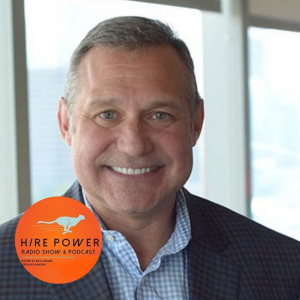
Thursday Dec 24, 2020
The Pivot to a Remote Interview Process with Vince Thompson of MELT
Thursday Dec 24, 2020
Thursday Dec 24, 2020
Please, please, please wear pants during your video interview! Both parties, not just the person being interviewed.
Just yesterday, Jessie filled me in on the horror story of her last interview. The interviewer spilled his coffee, jumped up really quickly to reveal he was in his holiday boxers. While it makes for a hilarious story, it did not win the hire for the company...
Our guest today: Vince Thompson, Founder & CEO of MELT
One of America’s most successful sports marketing and branding agencies, and author of Build Brand You .
Vince has been named one of Atlanta Business Chronicle’s “Most Admired CEOs,” among the “500 Most Influential Atlantans” by Atlanta Magazine, the American Diabetes Association’s “Father of the Year,” one of Sports Business Journal’s “Power Players,” and was listed by BizBash as one of the top 1,000 people in the event industry.
Today we discuss:
- An impressive Pivoting story doing
- Building a virtual hiring process
Challenge today?
- Business collapsed overnight on March 16th
- Overnight NCAA canceled everything
- Nobody knew what was going to happen
- Had to furlough dozens of employees within weeks
- Breakdown in demographics
- Fear & unrest
- Pandemic, unrest, election …. Oh my
- Made the shift to 100% remote
- The liability gap is HUGE
- Mitigating the litigation dream
Silver linings
- Positive forward facing manner
- Reposition the company - opportunity to showcase what they are doing
- Career development
Why is this important to the company?
- Shifted /evolved the company into a multimedia & event company
- Overnight the market shifted to buyers market
- It will kill the “bounce” mentality
- Prepare for the next evolution
- Good will is good business!
How do we build into your company?
- Building a virtual hiring process
- Bring the heat (first impression)
- Wear something nice
- Know everything about the company, job & the person you are interviewing
- Get a good feeling for the chemistry before diving in
- Trust your gut
- Cease the opportunity to really have a more thorough vetting process
- Improve the process
- What did they do for themselves & others during Covid?
- What did you do to enhance yourself?
*during this time, if nothing was done for self or others…. Not something you want to hire
- Look at the big picture of “Who” the person really is
- A whole different set of ways in which you can
- Can't coach desire & attitude!
- Put something out that is positive, and
- No bad ideas to pitch in the marketplace
- Go from crazy to genius overnight
Key Takeaways:
- Pursue any crazy idea that might have been shelved
- Use a lot more discretion in hing as it is now a buyers market
- Shift in hiring for chemistry & culture to allow us to make more value based decisions
Guest Links:
LinkedIn: Vince Thompson
Website: MELT
Email: vince@meltatl.co
Twitter: vinnyinc
This show is proudly sponsored by Criteria Corp
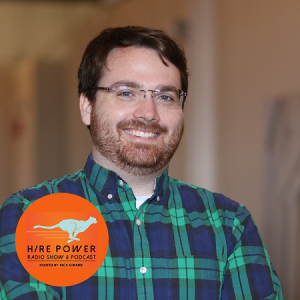
Friday Oct 02, 2020
Why the 30, 60, 90 Day Job Posting Wins Hires with Dan Moore of Vaporware
Friday Oct 02, 2020
Friday Oct 02, 2020
Our guests today: Dan Moore, Co-Founder & CEO of Vaporware
Dan is a trained computer scientist who helps clients craft ideas into scalable products. Always one for over-communication and compulsive attention to detail.
Dan co-founded Vaporware to help entrepreneurs take their software ideas to market. Over the past 7 years he has helped Vaporware deliver dozens of apps in Human Resources, Staffing, and Recruiting—all while building vaporware into a stellar organization.
Hiring a bench of developers, designers, and product managers is a challenge for any organization, but Dan has created 2 expert teams that combines all 3 roles at Vaporware.
Today we discuss:
- The 30,60,90 job posting; What it is & how it works
- How to build it for hiring success!
What is a 30/60/90 job posting?
- A better way to do job postings to find the right candidates.
- A list of objectives at different checkpoints (30-60-90 days)
- Designed to ensure proper onboarding and culture fit before the company invests too much.
What happened to drive this solution?
- Created out of personal desire because of the experience from prior companies- escape from past experiences
- How would we want to be hired?
- Tailoring to culture fit is much more important
- Allow people to do different things within one company
- Not looking at what they have but looking around ….
Why is this important to the company? Yes can meet those objectives!
- Limits company risk
- Shifts away from skills
- Keeping people onboard
- Retain people longer from 3-6 months to up over 4+ years
- Bottom line, higher attraction of more seasoned employees
Rick’s Nuggets
- 90 day performance metrics are a necessity for a successful hire
- Sets up the framework for the communication and expectation structure
- Clear guide of what needs to be accomplished by when
How do we build out a 90 day plan?
- Start with the end goal (6 months to a year)
- Stay with us forever: They’re bought into the mission and helping us define it
- Figure out how we can evaluate that in the first 90 days (limit our investment)
- Question what is realistic in 90 days?
- To get to 90 days
- Negotiation between desires and realism.
- Hope for the best but don’t negotiate your minimum expectations
- Define 60 and 30
- Break out what needs to happen for 90 to be successful = 60 days
- Break out what needs to happen for 60 to be successful = 30 days
- Keep flexible enough for applicant to define their own OKRs within that framework
- Post into job listing. Applicants can define OKRs (Objectives and Key Results) within that posting
- Reverse engineer what needs to be
- What are the OKRs
- Set up framework for people to self manage their goals
- Break things down into strategy
- Compelling ability to break things down for company
- Autonomy, bring people who are smarter and can teach us something
Rick’s Nuggets
- Additional formatting for the job add to attract passive people
- What’s in it for me?
- Solution
- Performance metrics
- Call to Action!
Key Takeaways:
- Align to culture first
- Have a 90 day plan
- Review and adjust the plan as you go
Full video of today's #hirepowerradio show available on YouTube
Guest Contact:
Vaporware website or Email: dan@vaporware.net
Links
Website: Vaporware
Vaporware's Sample: 30,60,90
#hirepowerradio #vaporware #hiring #founder #startup #business
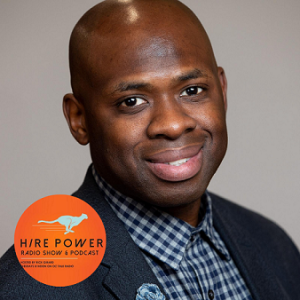
Thursday Aug 06, 2020
Removing Bias in the Hiring Process with Bruce Marable of Employee Cycle
Thursday Aug 06, 2020
Thursday Aug 06, 2020
“I want to work with really smart people and here is a list of schools that this person will have graduated from” said Lawrence, the CEO. “I do not want to interview anyone who has not come out of one of these schools”.
My gut reaction was to simply say, “no thanks” and exit the meeting. Afterall, this CEO was going to be difficult to work with.
My response back was simply “Confirmation Bias”
We favor information that confirms our world view and this helps us to reduce any cognitive discomfort that discounts our values and realities. As Entrepreneurs, we are more susceptible to this bias because we are so focused on the task at hand. This reduces our ability to objectively make decisions that are best for the business.
Lawrence laughed, grabbed the sheet of paper and threw it in the trash. “Ok find me smart people”!
The truth is the strongest people often surface in the most unexpected ways and your bias clouds your vision of the truth!
Our guest today: Bruce Marable, Co-founder & CEO of Employee Cycle, the all-in-one People Dashboard
Bruce is a Philly-based serial tech startup founder. When Bruce is not helping HR leaders better use data to make smarter workforce decisions, he is making music playlists on Spotify, taking self-care at the boxing gym, or hunting for the best bread pudding around town.
Today we discuss:
- Why Bias needs to be eliminated from your hiring process
- How to deliver an unbiased, evidence based interview
Challenge today?
According to Wikipedia, Bias is defined as a disproportionate weight in favor of or against an idea or thing, usually in a way that is closed-minded, prejudicial, or unfair.
We all have bias. It is important to eliminate it for one simple reason… Your company’s success
Why is bias elimination important to the company?
- More diverse companies succeed
- More revenue
- Higher productivity
- Cannot properly market to diverse groups of people/customers
- Totally different backgrounds bring different ideas
- More diverse individuals create more self awareness, well rounded thought process
- Disabilities
- Sexual orientation
- Ethnicity
- Ageism
- Re entering workforce
- Incarcerated
- Parenting
Rick’s Nuggets
- Innate Biases
- Overconfidence: Subjective confidence in ideas or decisions
- Illusion of control: overestimate ability to control situation or outcome
- Anchoring/Adjustment: past experience predicts plans for future
- Confirmation: preexisting beliefs- devalue contradictory information
- Cognitive tunnel vision
- Curse of Knowledge : experts assume similar content understanding in others
- Optimism: See the positive outcomes… delusional optimism
How do we solve the bias issue?
Mindset
- Open to People who are different
- Everyone is on equal footing
- Allow people come in as being perceived as qualified
- Vs. unqualified
- Reinforce that they are qualified
- Eliminate your assumptions- college degree
Actions
- Recruit from a diverse pool of job candidates
- Remove all language in job descriptions that may have bias.
- Standardize the interview questions.
- Perform the same due diligence on all candidates whether that candidate is a referral or not
- Give all candidates the same level of respect
- Blind the resume process
- Remove bias from likability
Rick’s Nuggets
- Customer experience mindset - applicants are your customers
- More difficult to say No than yes
- Conduct a qualifying call with most
- Interview questions
- Pre-determined and assigned to the individual interviewer according to the order in which they participate
- Must gather evidence to support the decision either way
- Feedback & closure
Key Takeaways:
- Acknowledge confirmation bias.
- Review the language in your job descriptions
- Standardize your interview questions
Guest Contact:
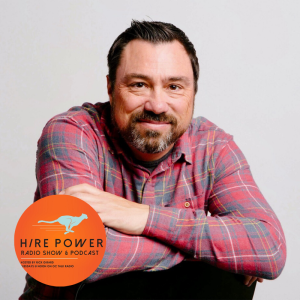
Friday Jul 31, 2020
Friday Jul 31, 2020
Key Points for Episode:
Timeline for Video Interviews - 72 hours
1- 45 minutes
2- 45 minutes
3- 45 minutes
4- 45 - 60 minutes
Decision - 24 hours from Final Interview
You must have your questions pre-written and assigned to the individual Interviewer
Questions designed to gain evidence of cultural alignment
** DO NOT just pick random behavioral questions!
They must have purpose and be tied to your company values!
Behavioral Questions
Follow up each question with the “How & What”
The purpose of each interview is to get to the “truth” of who this person is and how they align with company core values. Our goal with each question is to find hard evidence one way or the other. Past performance is a key indicator of future performance. We are going granular to understand the core of who this person is to fill your gut with accurate information to make the correct decision.
The Behavioral Interview: The simplest way to learn the behavioral model is to use STAR methodology. Let each interviewee outline the Situation & Task first. This is just the background of the story that you need to know to make the story make sense. Clear context! Look for difficulty, complexity or size of the challenge. What was the person trying to accomplish and why?
Approach: This is where we focus on the actions taken to address the issue, complete a task, solve a problem or improve the situation. We focus on the WHY here!
Focus in on this area the most and poke holes in the answers.
Each answer needs to be tested and must be followed up with why.
Look for Key details and explore them!
Why did you take that approach?
Why was that important?
Why did that work?
Results: What is the positive outcome for the story? What were the issues? Where did they fail? We are looking for tangible, supported evidence.
Video Interviews (Same Day Ideal)
- Ideal to line up back to back
- Schedule back to back or split them up 2/2 or 3/1
- Build a knockout question for each interviewer
Interview 1 - Cultural Value Alignment I
Interview 2 - Skills Screen
- Live working session to evaluate skills/communication
Interview 3 - Cultural Value Alignment II (optional) 24 hours from interview 2
Final Interview - Cultural Confirmation III & Offer preparation (Decision Maker)
Decision / Offer (24 hours max)
- Best to give immediate feedback
- Time kills hires, be decisive
Role Play
Interview Questions
Walk me through the steps you took to prepare for your last project / client presentation (preparation)
- What made those steps the most efficient?
- How did you do it specifically?
- Timeline set?
- Potential Challenges identified and how were they prioritized for consideration?
- What were the things you missed?
- What was the result?
- Why was this important to you?
**Give me an example of something you tried that failed miserably (keep light & fun)
(innovate without fear)
- What were the circumstances that justified the risk
- How was it implemented?
- What was the potential upside if it worked?
- What was missing?
- What would you have done differently?
- Why did it fail?
- What did you learn?
Tell me about a time when it was necessary to admit to others that you had made a mistake. (accountability)
- What was the specific mistake
- How did you identify the mistake?
- How did you handle it?
- Why did you choose that particular approach?
- What was the lesson learned?
- What did you do differently going forward?
Tell me about the last project you worked on where you were major time constraints (own it/quality effort)
- What steps did you take to ensure quality?
- What shortcuts were taken?
- What mistakes were made
- How did the client receive the work?

Thursday Jul 23, 2020
Thursday Jul 23, 2020
We are now remote. And we are learning so much about what it takes to keep your people engaged and productive. The balance between communication and micromanagement is often the Biggest challenge.
Here’s what we’ve learned: Consistent communication with ultra flexibility is working. Encouragement to take care of yourself first: ie: a walk, bike ride or step away is increasing productivity. Virtual happy hours are helping to forge team comradery.
Our guests today: Michael Houlihan & Bonnie Harvey, Founders of the world's top wine brand, Barefoot Wines
Beginning with virtually no money and no wine industry experience, they employed innovative ideas to overcome obstacles, create new markets and forge strategic alliances. Michael & Bonnie pioneered Worthy Cause Marketing and performance-based compensation. They built an internationally bestselling brand and as a result were acquired by E&J Gallo. Today, they offer their Guiding Principles for Success (GPS) & Shelf Smarts courses to help consumer product brand builders achieve success by maximizing the value of their human resources.
Today we are discussing:
- Virtual challenges today
- How to build company culture to an off premise workforce
Off Premise challenge today?
- Disengagement
- Not routine
- Physical commitment
- Daily encouragement
Why is this important to the company?
Two biggest hidden costs in every business!
- Reduce turnover
- Increase engagement
Good people transform to great people through growth
- Improve skill sets & relationships
- Allow people to do the work they like to do and not do. Allow them to create their own roles.
Rick’s Nuggets
- Accountability & Productivity
- Remote causes you to really put your business under the microscope
- Cost of a Bad hire is 30% of individuals earnings (US Dept of Labor)
- Does not include Morale & Productivity loss costs
How do we do it?
Find good people & build great people *****
- Keep people from being isolated (Team based)
- Culture of permission - make mistakes right. Don't hide mistakes.
Hiring tactics?
Overkilling Orientation
- Over educate
- Money map
- About understanding how the money flows to get to your paycheck
- 2 division company
- Getting into the cause & effect of the business
- Sales & Sales support
Include people in the solutions
- Everyone asked to contribute their ideas
- Footsteps to the wine in stores from the receptionist! (recognition)
- Throw problems out on the table and allow people to contribute
- Promote the idea that everyone has a voice
Rick’s Nuggets
- Finding good people requires work & a lot of conversations
- Creative ways to encourage engagement
- Virtual happy hour
Key Takeaways:
- You have a responsibility to improve your hires. Find their talents and expand upon them
- All companies have 2 divisions- sales & sales support
- All salaries start from the community not from the company!
Find Bonnie & Michael here:
Business Audio Theatre Linkedin
Websites: www.thebarefootspirit.com & www.consumerbrandbuilders.com
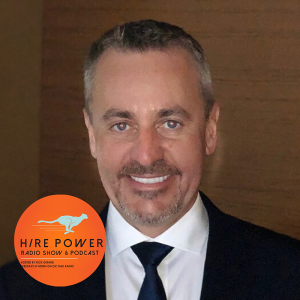
Thursday Jul 16, 2020
Thursday Jul 16, 2020
High performing individuals come in every flavor. They can not be identified by looking at a resume! They can only be discovered by understanding who the person is, the values they hold dear and the track record of the impact they have made in the past. Every day, your company loses money when you allow personal bias to influence your hiring decisions without proper evidence. Quite often, the strongest hire is not the person you envisioned for the role.
Our guest today: Kelly Robinson, CEO of RedDotMedia.
He founded Broadbean.com Inc 2001, which was acquired by CareerBuilder in 2014. Now he lead RedDot Media, recruitment advertising agency with a particular skill in programmatic advertising campaigns. Kelly has spent the last 25 years in recruitment and recruitment technology, during which time he has grown, integrated, bought, and sold businesses in both the UK and US.
Today we are discussing:
- Why you need to consider hiring people over 45+
- How to value wisdom & hire modern elders
Why don’t employers hire older people?
- The person they are hiring probably has more experience than they do.
- Oh, why would he want to work for me,
- They have done my job for 20 years!
- They don’t have the right degree.
- Younger workers are better because:
- They have more energy.
- They're more tech savvy.
- They're more willing to give discretionary effort.
- They'll work for us for the next 30 years.
- They have less health problems.
The reality is younger workers have just as many problems as older workers.
- Older workers are better because:
- They don't have kids pulling them constantly off their game (Uh oh! Parent bias!)
- While possibly not as tech savvy, they have experience in getting things done in different ways and they won't panic when the internet goes down for 15 minutes.
- They grew up in a time when work life balance meant you worked until the job was done.
- They're willing to by loyal to you for the next 7-10 years, which is more loyalty than you'll get from anyone else you hire.
- Older workers statistically don't miss work more than younger workers.
- In the next few years, 35% of our workforce will be 50 or older.
- And 8% of them—about 13 million workers—will be 65 or older.
- It’s hard to finance a 30-year retirement with a 40-year career - Chip Conley (Airbnb 52)
The average duration of unemployment for older job seekers has dropped sharply since 2012 (though still long); it’s down from roughly 50 weeks to 34 weeks for job hunters age 55 to 64. In other words, it now typically takes about seven to eight months to find a job if you’re over 55.
About 29% of job seekers 55+ are considered long-term unemployed (looking for work for 27 weeks or more); while that’s still high, it’s down dramatically from roughly 45% in 2014
AARP surveyed 3,900 people age 45 and older, 61% said they’ve personally seen or experienced age discrimination. Among those who’ve applied for a job in the past two years, 44% were asked for potentially job-losing age-related information such as birth dates and graduation years It’s almost an acceptable bias.
Why is this important to your company?
- Older workers may be better because:
- They don't have kids pulling them constantly off their game (Uh oh! Parent bias!)
- While possibly not as tech savvy, they have experience in getting things done in different ways and they won't panic when the internet goes down for 15 minutes.
- They grew up in a time when work life balance meant you worked until the job was done.
- They're willing to by loyal to you for the next 7-10 years, which is more loyalty than you'll get from anyone else you hire.
- We all miss work for stuff. Older workers statistically don't miss work more than younger workers.
The fastest-growing age demographic of employees in the workplace is 65 and older, which has experienced a 35% jump in numbers over the past half-decade. In the next few years, 35% of our workforce will be 50 or older. And 8% of them—about 13 million workers—will be 65 or older.
- According the U.S. Bureau of Labor and Statistics, 22.2 percent of the workforce is 55 years old and over!
- Research from the National Council on Aging has shown that modern elders have lower absentee and turnover rates than younger workers.
- Ultimately, age will be less of a factor. The Bureau of Labor Statistics projects that those ages 65 and over will experience the fastest rates of labor force growth by 2024.
- Many people who reach retirement age now are often healthy enough to run marathons, build houses
Rick’s Nuggets
- You can NOT tell if someone is good for your company via a resume! Anyone who says otherwise is delusional
- Recruiters/hiring managers filter people out
- Ageism
- Overqualified
- Too expensive from a benefits perspective
- Not technically aware- can't learn new skills (stereotyping!)
- Not the right educational experience
- Not a cultural fit (fitting in with people in their 20’s)
How do we do it?
- Start valuing wisdom
- Appreciate that you have no choice
- Promote diversity & inclusion… which includes AGE
- D&I increases innovation
- Productivity
- Demand that those responsible for recruiting Talk to people everyone who is reasonably close
- Eliminate educational barriers
- Anyone over 5 years experience, ignore the educational background
- Develop a phone screen process to gather evidence of success
- Judge viability by gathering accurate data
- Take notes
Guest Contact:
Email: kelly@reddotmedia.co
Twitter: @KellyJRobinson
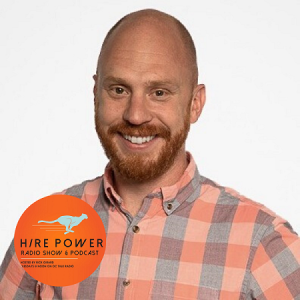
Saturday Jun 20, 2020
Hiring Trusted Talent with AJ Bruno of QuotaPath
Saturday Jun 20, 2020
Saturday Jun 20, 2020
Why you need to hire trusted talent to build and scale your startup. Referrals are still the strongest way to stack the deck with talent for your organization. But you cannot shortcut the interview process. Just because a person worked well in another organization does not mean they will be successful at yours. Diligence in gathering evidence of value, growth and cultural alignment must be gathered to avoid making a bad hire.
Our guest today: AJ Bruno, CEO & Co-founder of QuotaPath.
AJ leads the QuotaPath team as CEO & Co-Founder. Prior to QuotaPath, AJ spent 6 years at TrendKite, the company he founded and was president of in Austin Texas. At TrendKite, AJ led the go-to-market and sales strategy/execution and took that team from initial product inception through $20+ million ARR and 250+ employees. TrendKite was acquired by the public company Cision for $225 million in January 2019.
AJ is religious about vetting and hiring talent and has made over 300 hires in his career
Today we discuss
- Why trusted talent is the best option to build and scale your startup.
- What to do when you don't have a strong network
- The steps to take to hire through referrals:
Why is hiring “trusted talent” the best route
- Look into your own network of people you have previously worked with or go to a trusted source to help build the team you need to take you to the next level.
Why is this important
- Avoid running into bad hires
How do we do it?
- Reverse engineer your network
- Looking for trust and loyalty
- A lot of back channeling (connect with at least 5 people)
If you know the person?
- He needs to justify why for both parties
In the Interview process
- Disqualification questions- do you know who Elon Musk is?
- Tie questions to the importance of the role
Rick’s Nuggets
- Knock out questions
- Provide a growth path to avoid a transactional experience
Key Takeaways:
- Backchannel with at least 3 references if the hire is very strategic (the first hire in their position or respective position)
- Create a consistent process (with knockout questions or frameworks) if it will be a hire you will make multiple times (sales reps).
- Ensure that the person is sold on working with you and learning from you as much as possible if it is a strategic hire.

Thursday May 14, 2020
Thursday May 14, 2020
There is a flood of great talent on the market and the competition for those limited positions is heating up. With this rise in the talent pool the ability to properly access applications is a major challenge. The bar has been raised! Are you leaving good people on the table?
Our guest today: Shawn Sheikh, Co-Founder & Managing Partner of Pivot CMO
Shawn is a Silicon Valley & Beach serial entrepreneur and Y Combinator alumni. His specialty is helping companies scale from $0 to multi-millions in revenue, through both conventional paid acquisition and non-conventional growth hacks.
Apart from Pivot CMO, Shawn loves to work with founders to find creative ways to scale their businesses and owns and invests in a portfolio of small to medium sized businesses
Today we are discussing
- The challenges in a heavy applicant reply market
- How to effectively screen applicants to avoid false positives
What are the issues you are finding in screening applicants
- Quality
- Response rate
- Don't want to do the case study
Right Approach?
- Reply with application (google form)
Phone Screening
- Report to person call screen
Rick’s Input
- Job description- performance metrics and call to action
- CTA: 3 questions for submittal - to be completed for all applications
- Timing of the event…. ie: when to do a test
- Phone screen for Purpose
Current process that works
- Application process does work (cuts from 3k to 300)
- 20-30 people are qualified (phone screen)
- 75-80% show up for phone screen
- 6-8 to interview
- 1-2 to offer
Referrals- from employees
- 4 all hires
- One referral from a person they
Process
- Applicant review/application
- Phone screen -50% technical/ 50% fit
- Walk through assignment
- Test
- Interview
- Offer
Rick’s Nuggets
- Interview Structure & process tied to your Company values
- “What are you capable of achieving?”
- Make the call based on the person’s answers rather than the resume
Key Takeaways:
- Better screening questions during the process
- Addressing people’s needs before money
- Owning who you are!
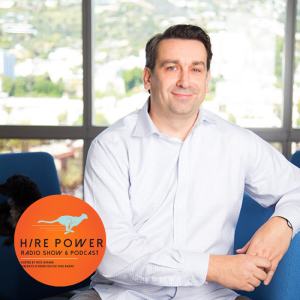
Thursday Apr 30, 2020
Using Assessments to Eliminate the Resume with Josh Millet of Criteria Corp
Thursday Apr 30, 2020
Thursday Apr 30, 2020
The key to successful hiring is in uncovering evidence in a person's ability to align culturally and professionally with your unique company. … None of this evidence is on a resume! How do we gather evidence? First, not short cutting the interview process. Focusing on deep behavioral questions then confirming your conclusions with data through assessments.
Our guest today: Josh Millet, Founder & CEO of Criteria Corp
Josh started the Criteria Corp in 2006 with a vision to create a SaaS-based pre-employment testing service that would make the highest quality employee assessment tools accessible to companies of all sizes.
Criteria has over 4,000 customers in more than 40 countries across the globe. Their pre-employment tests are an efficient and reliable means of gaining insights into the abilities and tendencies of potential employees.
Today we discuss
- Assessments
- Why and how to use them effectively
- A process to properly assess the person you want to hire
Why are assessments important?
With all the advances in HR tech in the last ten years that have transformed talent acquisition, we aren’t getting better at hiring when you look at results. 46% of all new hires are unsuccessful. The problem is we are relying on 70-year old tools, resumes and unstructured interviews, to gather info on applicants and make hiring decisions. These tools are letting us down. Why is it important? Immense bottom line implications.
Problem with Resumes
- Poor, incomplete, unreliable information that in the end does not predict much
- 85% of resumes contain falsehoods or inaccurate information
- Inject unconscious bias into the hiring process
- Boston & Chicago study
Unstructured interviews don’t work much better. Highly subjective, most interviewees make decision about applicants in first 5 minutes, based on highly subjective Criteria
- Evaluating for good data - using objective data to reinforce your decision
- When you think about how to gather data to make good decisions on candidates you should be focusing on:
- Accurate, reliable info
- Objective data not subjective impressions
- Removing bias from decision-making
- Being forward-looking data: how can this person learn, evolve as job does, rather than just past experience
Why are assessments the answer to resume
- Focus on good reliable data
- Things that are relevant to the job. Data that is not subjective and predicts job performance
- Ie cognitive ability (best predictor or job performance, critical thinking, attention to detail learning ability, problem solving)
- Behavioral or personality assessments - Interaction driven roles
- EQ/EI- overlapping
Rick’s Input
- Confirmation of data gathered minimizes bias
How to do it?
- Moving past the resume
- Use assessments early in the process (high applicant to hire ratio)
- Right after the application
- Resume submittal
- Link to assessment in the job post
- Most common after the application has been accepted
- Passive searches (a bit later in the process)
- Assessment become a resume substitute
Process for Active
- Choose assessments that are job related
- Measuring things important to the role
- 30-40 minutes of assessment
- Tailor the testing for the role
- Run at the Application stage or just after (automated)
- Use results to prioritize the people that are more likely to succeed
- Interview
- Assessment can generate further behavioral interview questions tailored to the individual based off their results
Process for Passive (recruits)
- Smaller number of people
- Lower number of people interviewing
- Use later in the process when the candidate is more engaged
- Assessment after the phone screen
- During the interview or just before
Rick’s Nuggets
- Must gain a personal buy in BEFORE giving tests or assessments
- People perform better when they want something
Key Takeaways:
- Do things in your hiring process to get good data
- Make sure everything you are using has a purpose that measures outcomes related to it

Friday Apr 24, 2020
Friday Apr 24, 2020
How can you tell if someone is good just through a phone screen?
A BIG thanks to our guest today: John Driscoll, Co-Founder & CEO of Naked Development.
Part 1: Outlining Key Points for Episode:
- Phone Screening: From reviewing the application to proceed to scheduling a call should be between 2-4 days (MAX)
- Ideal timing for phone call: 45-60 minutes
Part 2: 3 components of the phone screen (understanding the person) Why, What & How
*PAIN (Why):
- Discussion part 1:
- Pain is the person's reason for talking to you
- Types of PAIN to be aware of from an employer prospective:
- LEGITIMATE PAIN
- Lack of Growth
- Work Content/Technical Exposure
- Leadership Issues
- Unappreciated, Under challenged, Underutilized & Underwater
- Commute
- SELF-INFLICTED PAIN
- More Money
- Personality conflicts
- Always open
John’s role “Hiring Manager”
*DESIRE (What): What is the environment that this person will THRIVE
(This is the part where the employer should look into whether or not the candidate is a cultural fit)
- Things to consider when taking a deep dive into their desire:
- Their Vision for where they will thrive
- Fit to your company
- Important note for employers:
- Cultural fit and Attitude are far more important than skills. Yes, More important than skills! Skills can be taught and acquired. Attitude and cultural fit are often woven into the fiber of who this person really is at their core.
IMPACT (How?) (Identify Level of performance)
- Evidence of Success
- IMPACT - Do they go above and beyond (This should be demonstrated by example they give you of their past success and how they work with others)
- Commitment to Personal Growth
- Phone Screen Script:
- *PAIN (Locate a solid PAIN) …. Dig, dig, dig!!!
- What is happening with your current role that is making you open to exploring something potentially stronger?(Very important one to begin with)
- *DESIRE:
- If you could create your next company, what would that look like for you?
- What is your vision of your next role?
- What type of environment do you flourish? Culture, Size, Role, & Domain?
- *IMPACT:
- Tell me about the most significant impact you had in your current role?
- *SKILLS:
- What are your core Strengths?
- COMMUTE:
- Where are you willing to commute on a daily basis? (push limits)
- INTERVIEWING: Currently: Interested:
- To properly pace out the process, where are you in the interview process?
- CITIZENSHIP:
- What is your current work authorization status?
- SALARY: Looking to make $
- What are your minimum salary requirements?
- AVAILABILITY:
- What is your availability to interview this week? (dates/times)
- ***OFFER ACCEPTANCE MAIN CRITERIA: 1: 2: 3: 4:
- What are 3 or 4 “Main Criteria” that you would need to see in a company for you to accept an offer with them?
Final Step: Connecting the Dots
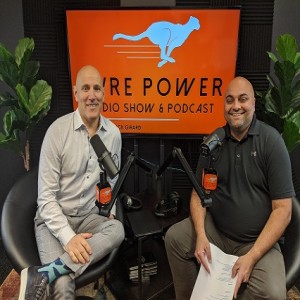
Thursday Apr 16, 2020
AI: Solving for Ego Hires that Fail with Neil Sahota of UC Irvine
Thursday Apr 16, 2020
Thursday Apr 16, 2020
Is AI the future of recruitment? Better yet, will AI replace the need for a resume? Tools are available to utilize AI in improving workflow and screening applicants. The question lies in their accuracy and viability in identifying the strongest people for your unique organization.
Our guest today: Neil Sahota, AI Expert & Author of “Own the AI Revolution”.
Neil Sahota is an IBM Master Inventor, United Nations (UN) Artificial Intelligence (AI) Advisor, Faculty at UC Irvine, and author of Own the A.I. Revolution. He is one of the few people selected for IBM's Corporate Service Corps leadership program that pairs leaders with NGOs to perform community-driven economic development projects.
In addition, Neil partners with entrepreneurs to define their products, establish their target markets, and structure their companies. He is a member of several investor groups like the Tech Coast Angels and assists startups with investor funding. Neil also serves as a mentor in several incubator/accelerator programs.
Today we are going to discuss
- All things AI, What is it, how does it help with hiring
- Why it is important today
- How to implement the effective use of AI into your hiring today
Why is AI important in hiring through today’s landscape?
- People looking for work should be looking for more than just a paycheck.
- Why is this important?
- People quit when you bring the wrong person onto the team
- Productivity plummets
- Ai can eliminate the need for a resume!
Rick’s Input
- Automating workflow
- Sourcing/screening
- Good at all things transactional
How do we start leveraging AI to optimize hiring in today's landscape?
- Using AI to eliminate ego based hiring decisions
- Story of Omelveney (law firm)- use pymetrics
- Testing for cultural value
- Allow you to evaluate for culture and team fit
- Ai tools to analyze how well code is written
AI Tools Currently Available:
- Pymetrics: https://www.pymetrics.ai/
- Paradox.ai: https://www.paradox.ai/
- Ayra: https://goarya.com/
- Eightfold.ai: https://eightfold.ai/
- Xor.ai: https://www.xor.ai/
- Pandologic: https://www.pandologic.com/recruiting-with-ai/
Rick’s Nuggets
- Add CTA’s into your job postings to allow the cream to rise to the top
- Innovation is eliminating the resume
Key Takeaways:
- Elimination of resumes
- Reduced bias in recruitment
- Increased diversity & inclusion (by accessing “non-traditional recruitment pools)
- Quantifying cultural/team fit
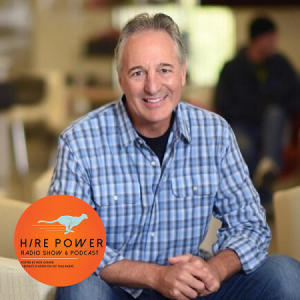
Thursday Apr 09, 2020
Thursday Apr 09, 2020
Remember that person who you really wanted to hire but they took a job somewhere else? Now is the time to reconnect. Through no fault of their own, great talent is being displaced due to the pandemic. Now is the time to proactively hire and raise the level of performance through opportunistic hiring! This crisis will pass. And when it does, emerge as a much stronger organization and be positioned to crush your competitors!
Our guest today: Jeff Erle, Former CEO of MobilityWare
Jeff has held numerous C-level positions throughout his career. His experience spans across start-ups, small privately-held and large public enterprises including ADP, Western Digital, MobilityWare and most recently as the COO at Blast.
Jeff focuses on building high-performing teams and evolving award-winning cultures focusing on multi-generational workforces, developing/coaching key executives, and helping companies develop strategies to scale for growth and/or exit.
Today we discuss
- Why it is a great opportunity to hire
- A-players: what are they?
- How to identify and elevate your company performance during this downturn
Why is this important evaluate and proactively hire now?
- Talent is your #1 asset
- You now have the opportunity to upgrade your talent
- Missing an amazing opportunity to settle for the first people to knock on your door
- Now you have the ability to find an abundance of a players
Obviously, the Covid-19 virus has changed the world’s landscape like never before in our lifetimes. In particular, for businesses of all sizes, the nature of the workforce has and will continue to evolve, especially given the looming changes to the large number of workers that will be looking for work. Whether already or soon to be unemployed, or working for a company whose business model has been adversely impacted, millions of people will be applying for open positions later this year unlike anything we have seen in a very long time.
What's an A-player?
- top 10% of experience, capability, for the compensation you are willing to pay for the role.
Given that, for most companies, people are their greatest assets, the challenge will be to retain your A-players. And the opportunity would be to use this historic dynamic to “upgrade” your team and your organization. We’ll focus today on the latter, using the talent either already available or soon to be to assure our businesses come out of this cycle stronger than ever before.
Rick’s Input
- SalesForce, CEO Marc Benioff (tweet- 2200 jobs open…… prioritizing referrals of friends & family who have lost jobs.
- A-player - right profile (builders/startups), cultural alignment
- Desire should be workable
How do we start?
First step is to develop a definition of what an A-player looks like for your organization.
- One who is among the top 10% “available” for the open (or too be upgraded) position
- “Available” means: they are willing to accept an offer given the compensation level offered, in a culture such as yours, in your particular industry and location, with the resources available to them, with specific accountabilities/responsibilities, and reporting to a specific person
- Discuss examples...
Second step is to take an inventory, or a snapshot of your people assets and the level of their quality on an individual basis:
- Identify the “Pioneers” (A-players), “vacationers” (maintainers), and the “prisoners” (those always complaining… but they never leave; they feel handcuffed...)
- Methods to accomplish this include: (1) performance management tools (reviews, feedback, etc.) commonly used at year end for merit increases, and/or (2) “force-ranking” individuals either within departments, or if small enough, across the entire organization. (NB: There are numerous views/debates of the efficacy of force-ranking… but I have used it successfully, especially in circumstances such as this, when economic times demand tough decisions around headcount.)
Last step is to assure your recruiting strategy, methodologies and capabilities can fulfill this goal
Be diligent
- Shift focus to finding the best; this may mean balancing identifying and vetting “passive” candidates with “active” candidates.
- This means you cant be lazy. Its easier/faster to work only with the myriad of resumes and candidates that will be applying to your company this year, but they may not represent the best pool of A-players available to you.
- Ways to assure this include:
- If you have internal recruiting teams, assure they are aligned with your remit of seeking passive candidates as well as active.
- Get a good third-party recruiting partner to find the passive A-players and focus on presenting those people to your hiring manager(s).
Embrace increased volumes and/or new modes of interviewing
- Phone screens
- Video interviews (zoom, skype, etc.)
- Learn best practices on how to do these; many do’s and dont’s lists now available
- Teach managers how to do an appropriate phone screen and video interview
- Pre interview prep and internal alignment amongst interviewing teams
- What are the top key capabilities you all want for the role?
- Who is vetting which ones?
- Who is determining cultural fit?
- Who is making the final decision? Is it unilateral, consultative, or consensus?
- Agree on Who is “buying”, who’s “selling” during the process?
Remember:
- The more time you spend up front the less time you spend in the interviews themselves
- Poor managers don't want to do the work up front to coordinate
- You need to stand out to be the memorable company to attract the A-player.
- People go to work for good leaders/managers (converse of that's what they quit), not just good companies.
Rick’s Nuggets
- Build a list and say Hi
Key Takeaways:
- Now is a great time to re-evaluate your talent, your greatest asset, and upgrade as necessary
- To do so, you will need to embrace new internal areas of focus and philosophies, and your org will need to embrace and/or learn new ways of defining, finding, vetting and attracting A-player candidates

Thursday Mar 26, 2020
Conducting A Powerful Phone Interview with Christopher Wood of Rise Recruitment USA
Thursday Mar 26, 2020
Thursday Mar 26, 2020
One of the most powerful tools in your hiring process in the phone interview. The challenge that we have is that it is treated as a screen just to find out if someone has the skills needed. And this process takes on average 5-10 minutes.
It is such an opportunity loss because your first point of contact should be about establishing the connection with the person regardless of the outcome. Your phone interview sets the stage for how you are perceived and severely affects your ability to hire.
Today’s Quote:
"When it comes to success, there are no shortcuts." - Bo Bennett
Our guest today: Chris Wood, Director of Recruiting for RISE Recruitment USA & Managing Director of theRecruitmentCollective
Chris has spent the past 15 years in the Staffing industry utilizing his background in Recruitment and Account Management to help Fortune 500 companies solve their hiring problems by recruiting top talent within the Aerospace, Automotive, Medical Device, Healthcare, Finance & Consumer Goods industries.
In 2017, he took on the role of Managing Director at theRecruitingCollective, an organization of independent, specialized recruiters and boutique firms centered around providing new, custom talent programs. His primary focus today is attracting over and retaining top talent to the Cannabis, CBD & Natural Products industries.
He previously sat on the board for National Human Resources Association – Los Angeles and is currently on the program committees for DisruptHR Orange County and San Diego. In addition, he is an advisor to numerous Recruiting Technology platforms and emerging Cannabis and CBD companies and a member of the National Association of Cannabis Businesses.
Today we are going to discuss
- Why phone interviews are a critical part of the hiring process
- How to conduct an effective phone interview
Why are Phone interviews more important now than ever?
- Understand the person
- Goals, skills & interests - Career path/motivations
- Passive recruiting - building a constant stream of qualified candidates
- Due to the lack of face to face; with Covid-19 restrictions on in person meetings, this is the only way to hire talent during these times
- Sets the tone for process
Positioning of your phone interview
- Setting a clear objective of what you want to get from the call; feel for personality fit with team, explanation/knowledge of necessary experience, understanding of career path and long term intentions
- Asking specific questions that address strengths of candidate that fills a need with your team
- Identifying interest of candidate in role & joining your team
How to conduct a phone interview
- Self reflection- identifying the hole on the team
- Understand what is really needed
- Identify characteristics of the person so you can create questioning to reveal if candidates fulfills your teams need
- How are you going to find what you need
- Creating the profile of the ideal hire
- Establishing must haves vs nice to haves
- Contact
- Asking the questions that are centered around the key things you need to know
- Strategic questioning
Rick’s Nuggets
- Purpose of the phone interview is to understand the person first
- Identify their reason for hearing (pain), what they want to be doing (desire) and what they have accomplished
Key Takeaways:
- Don't just look at the resume, definitely talk to someone. Take the phone screen very seriously
- Really get to know what the person wants. Get to know them!
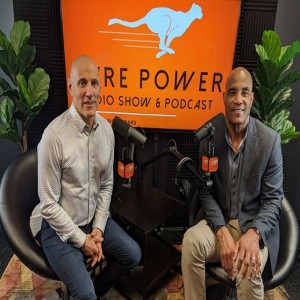
Wednesday Mar 18, 2020
Wednesday Mar 18, 2020
How to evaluate for good discretion in the hiring process. Discretion is defined by Merriam Webster as an “Ability to make responsible decisions”. This is a quality that all leaders expect from their people but as we know, this is not always the case. How do you interview to uncover good discretionary habits?
Today’s Quote:
"A sound discretion is not so much indicated by never making a mistake as by never repeating it." - Christian Nestell Bovee
I’m Rick Girard and welcome to the Hire Power Radio Show. We help Entrepreneurs and hiring managers to avoid costly hiring mistakes by identifying a specific problem and providing proven solutions to enable you to WIN the right hire. We share insights from top-performing rebel entrepreneurs, disruptors & industry experts.
Like our guest today: Joseph Hopkins, Founder & Senior Managing Partner of The IPRESTIGE Emerge Fund, LLC
Joseph is a thought leader in AI, authentication and security technologies, He leads an innovative emerging technologies firm that serves as a proprietary first-mover advantage IP incubation model that concentrates on growth opportunities in digital identity protection, security and advance encryption technologies.
Prior to Joseph’s AI and digital identity security work, he served in key executive management roles for Fortune 500 companies, including Kaiser Permanente, 3M, GSK, Allergan, and KPMG. He has hired Hundreds of people throughout his career.
Which makes Joseph a perfect expert for today’s topic. Joseph, Welcome to the Hire Power Radio Show today!
Today we are going to discuss
- Why it is important to Connect with people while adding value
- How to evaluate for good discretion in the hiring process
Connecting with people to add value
- Listening skills
- No one wants to hear about your problems
- Pick up on a person’s cadence
- What makes the person tick as a person
- Navigate how you engage as to their preference
- If you miss the connection, you’ll never get it back
- Pick up folks who miss the 9-5 mentality
Rick’s Input
- No one cares about the words coming out of your mouth
- While hiring it is critical to be more concerned about the other person than filling your role.
How to evaluate “good discretion”
- Trusting the gut, instincts
- Less tricky the older the person is
- More experience, the less risk
- Interest or passion in the work
- Experience
- Clear signs around eye contact, body language, smile while talking, taking themselves too seriously, jovial.
- Education - important to him.
- Live your life based on what you have learned rather than the exceptions
The ingredients that keep people engaged in an
- Balance of coolness and professionalism
- *Discretion - overly doing something can affect the relationship with the client
- The more the client is comfortable the successful the interaction will be.
Rick’s Nuggets
- Opener “open to hearing about something career advancing”
- Don’t pitch your job, company or yourself
- Find out what’s happening with you?
Key Takeaways:
- Empirical stuff- education, background & skills
- Interpretative- talk to people that have worked with you. Subjective perspective
- His Gut instinct- in conjunction with the other two
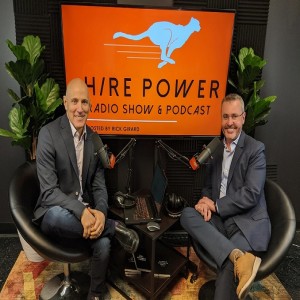
Thursday Jan 30, 2020
The Right Way to Advertise Your Jobs with Kelly Robinson of RedDot Media
Thursday Jan 30, 2020
Thursday Jan 30, 2020
Posting your jobs can be a very frustrating exercise. Especially when you receive little to no response. Or worse yet, you receive an onslaught of unqualified responses.
Today is all about how and where to post your jobs to attract the right people! So we are going to geek out on advertising and teach the right way to utilize postings in your recruitment strategy.
Today’s Quote:
“Advertising is an environmental striptease for a world of abundance.” - Marshall McLuhan
Our guest today: Kelly Robinson, CEO of RedDot Media
20 years on the staffing recruitment and recruiting technology.
RedDot media is a recruitment ad agency with a particular skill in programmatic advertising and helping companies socialize their jobs with our Paiger platform. Prioir to RedDot Media, Kelly founded Broadbean.com Inc 2001, which he sold to DMGT in 2008, launched in the US 2009, and lead the strategic acquisition by CareerBuilder in 2014.
Today we are going to discuss
- Why Job postings fail
- Different ways to advertise
- Steps to take to implement programmatic job advertising
Where do people fail while posting jobs?
- Spray & Pray
- Pay no attention to the content
- Not thinking about what the person really looks like
- What is an important Mindset?
- Treating people who apply the same as a direct recruit.
- People who apply are just open, not sold on your company
What are the different ways to advertise?
Post & Pray - what most do now!
- Programmatic advertising
- Rule based job posting
- Only paying for results
- Click bidding to get your jobs on the top of the listOnly paying for results
Rick’s input
-
- Need understanding of what needs to be accomplished
- Performance metrics
- Content rarely touches the individual (never answers “what’s in it for me”)
How to implement programmatic job advertising
- 3 ways to do
- Use an agency to do it
- Buy a system and DYI & hire someone who is dedicated to doing it.
- Effective in duration based advertising.
- Cost per view or cost per applicant
- Best for 20+ jobs per month
Steps to maximize your job posting
- 20 or less
- Java engineer
- One-offs- start with Indeed
- Zip recruiter is good because of their advertising
- 65 mil lookers a month
- Identify 2 of 5 skills and talk to them.
- Write a good job description
- Have a lot of conversations
How to maximize relevancy
- Job descriptions: Talking to about emotional factors
- Dependent on what and where you are looking for it
- Forget the application process.
- *treat people not like an application but like they are part of the conversation
Key Takeaways:
- And as Jim Collins said it’s the Genius of the AND versus the Tyranny of the OR. and embrace the "Genius of the AND.
- Writing job ads is a skill - get better at it, AND have fun with it.
- Understand and qualify your job description ****A good question is what is NOT getting done while you don’t have this person.
- Job Applications are people who have given you permission to have a conversation with them. Your job is to figure out together if they should quit their job and come work from you.
- It’s not all about saving money a 3,6% unemployment rate!
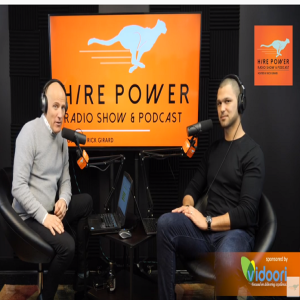
Thursday Jan 23, 2020
Interview Qualification is a Two-Way Street with Greg Toroosian of Elevate Hire
Thursday Jan 23, 2020
Thursday Jan 23, 2020
Each individual brings a unique perspective to every interview conversation. Yet most interviews focus on “what you can do for me” almost entirely from a skills perspective. People want to know what’s in it for them before they choose to engage with you.
Today’s Quote:
"Though we may have desires or bold goals, for whatever reason, most of us don't think we can achieve something beyond what we're qualified to achieve." - Simon Sinek
Our guest today: Greg Toroosian, Founder & Managing Director of Elevate Hire
Greg Toroosian founded Elevate Hire after more than a decade in the Talent Acquisition space. Having previously worked for startups, globally recognized brands, and recruiting agencies, He believes that recruiting and retaining talent is key to having a successful company.
Greg is an expert at qualifying talent for organizations which has led to successful hires for many clients in a variety of industries.
Today we are going to discuss:
- Types of qualification
- Plan of attack on how to effectively qualify people
What is candidate qualification?
- Definition: A quality or accomplishment that makes someone suitable for a particular job or activity
- Two types of qualification
Checkbox
- Asking yes/no questions
- Requirements focused
- Doing the bare minimum
- Ineffective because you are lying to yourself
Thorough
- Have a clear understanding about what the person is actually looking for
- Clarify the likelihood of acceptance of the job
- Fit for the company
- Answer the question (Is this a good candidate)
What's important for qualification?
- Look at profile (linkedin, resume)
- Longevity, career trajectory, companies/industries, titles
- Recommendations (linkedin)
How do we avoid having a checkbox process
- Mindset of the call: don’t go into every call wanting or being hopeful that this person will work out. Ask the questions that unearth what you really need to know.
- Conversational qualification calls.
- Ask open questions, ask scenario-based questions, and ask questions that will determine if this person is a non-starter.
- Listen carefully. Be strict and be honest.
Framework for Effective Qualification
- Firstly, you need a clear understanding of the role you’re interviewing for, its scope, the immediate need, and the future possibilities.
- Be comfortable in leading the conversation so you can get the questions answered that you need.
- Conversational and open questions with enough space for the person to really say what you need to hear.
- Have a form of the questions to be asked, know what you need the answers to be, but don’t read a script.
Key Takeaways:
- Build your own qualification form to use as the foundation for every call.
- Questions that unearth a lot:
- Why are you open to a new role?
- What are you looking for from your next role?
- Talk me through your current role and responsibilities. You can tell a lot about someone's role, their involvement, and their overall understanding of their craft by hearing them speak freely about it. Take notes and then clarify any points you need to.
- After telling them about your open position, ask them how it sounds to them as a next step? What specifically appeals to them from what you shared? Get them to sell the role back to you and to sell themselves as a candidate.
